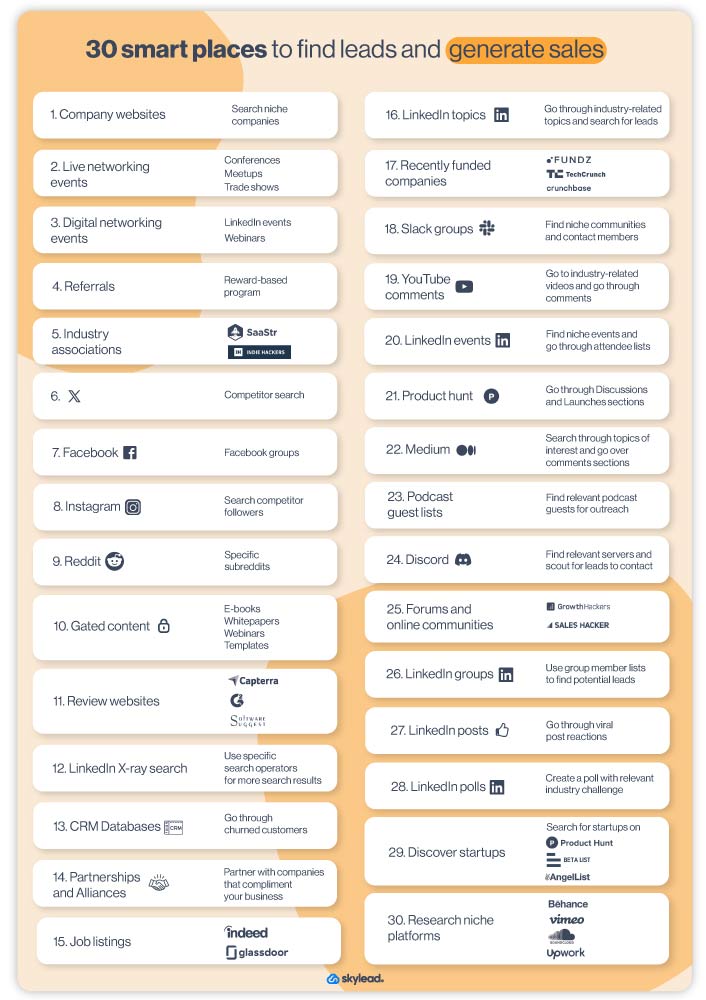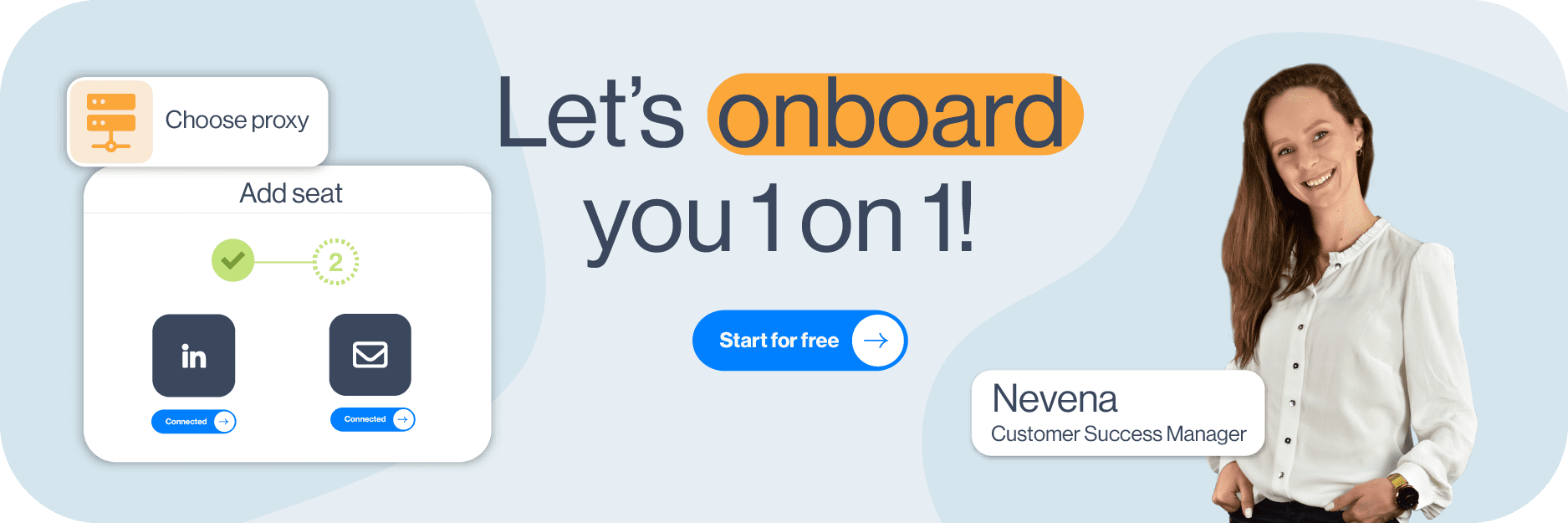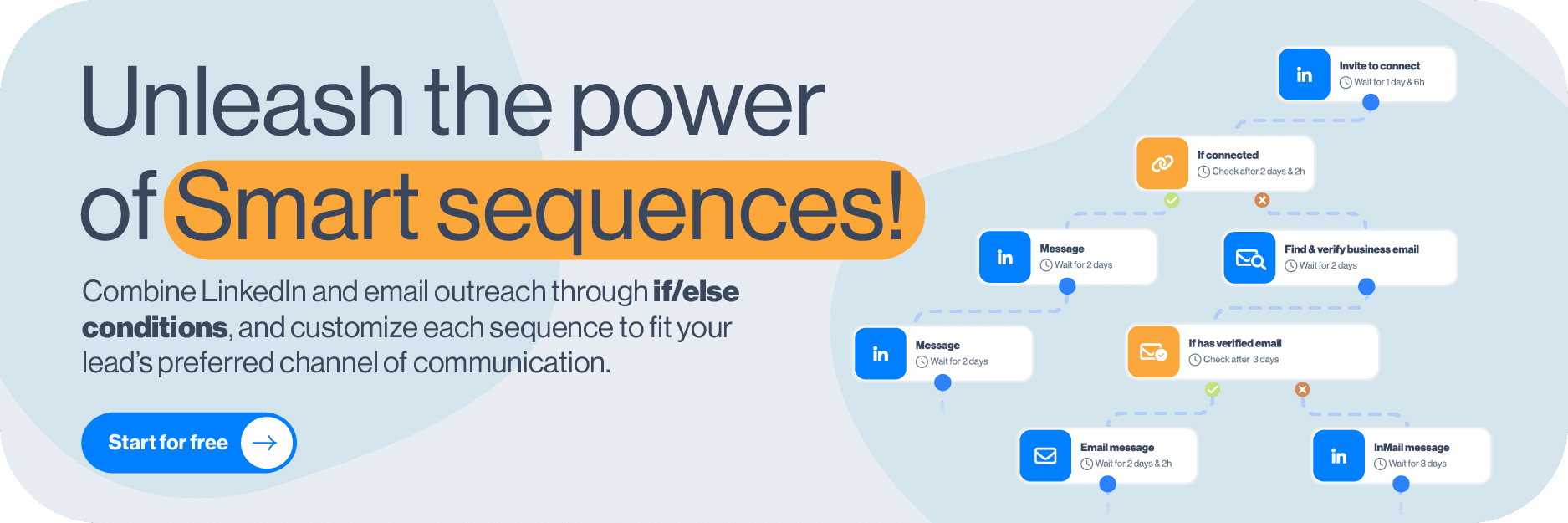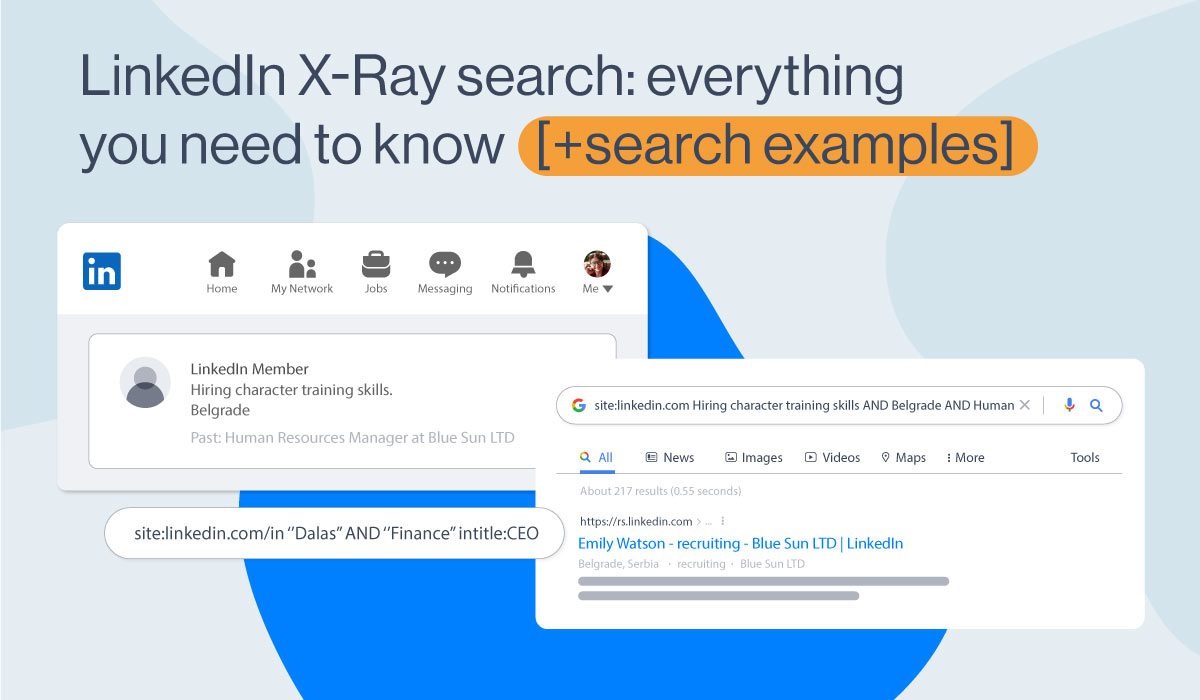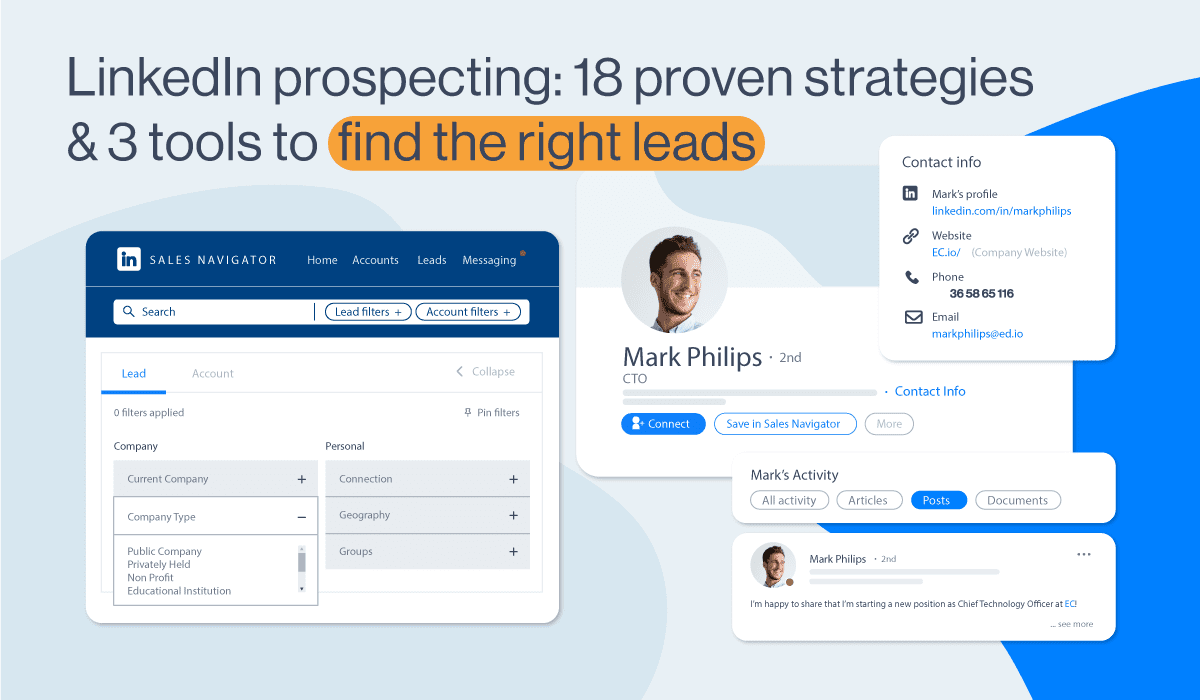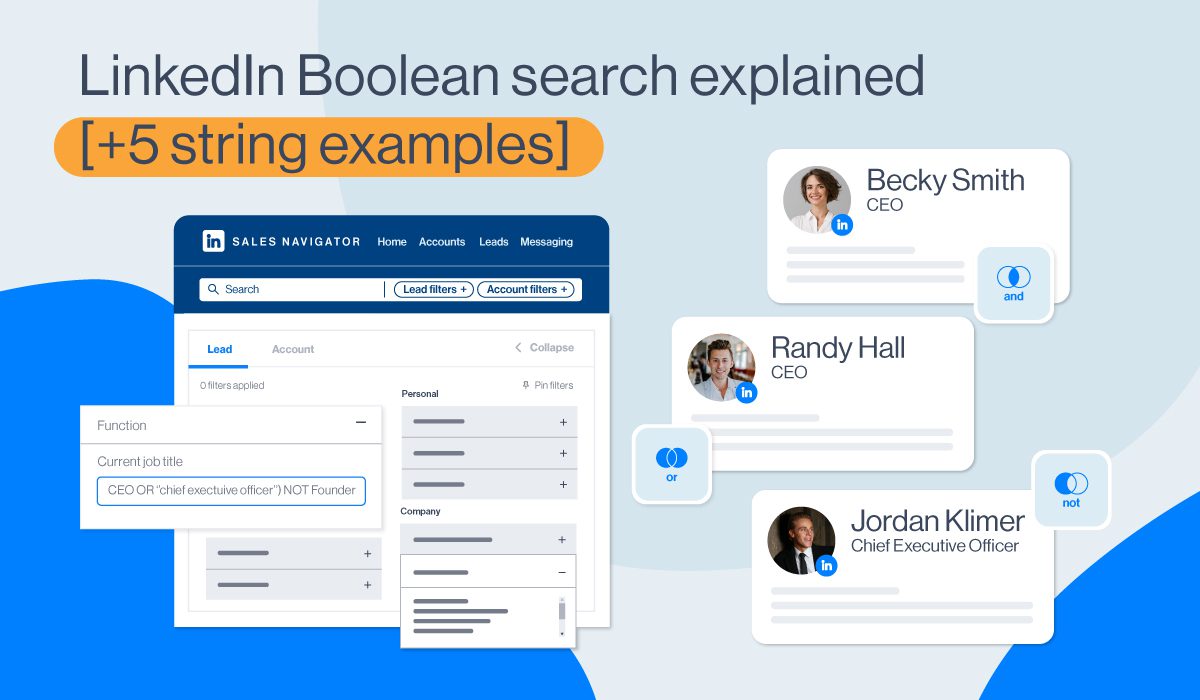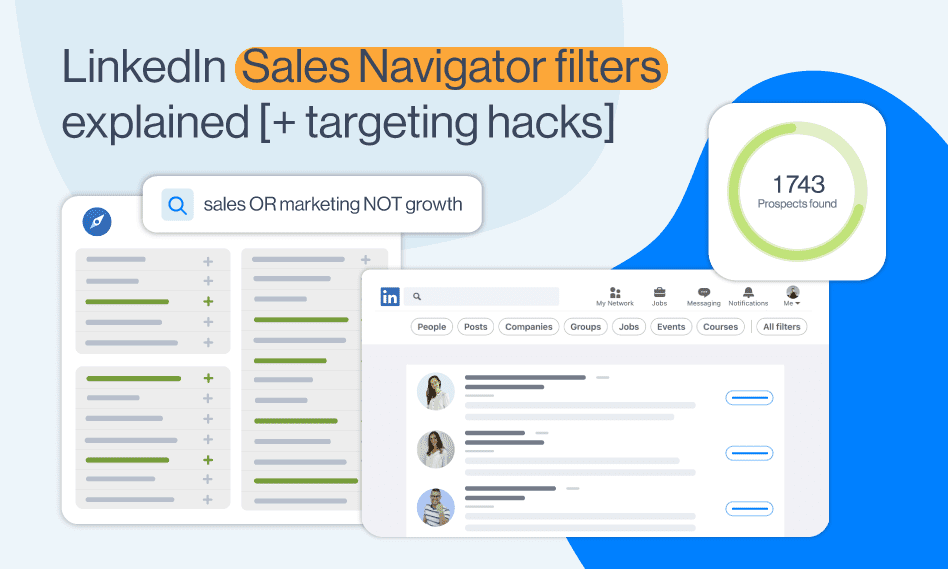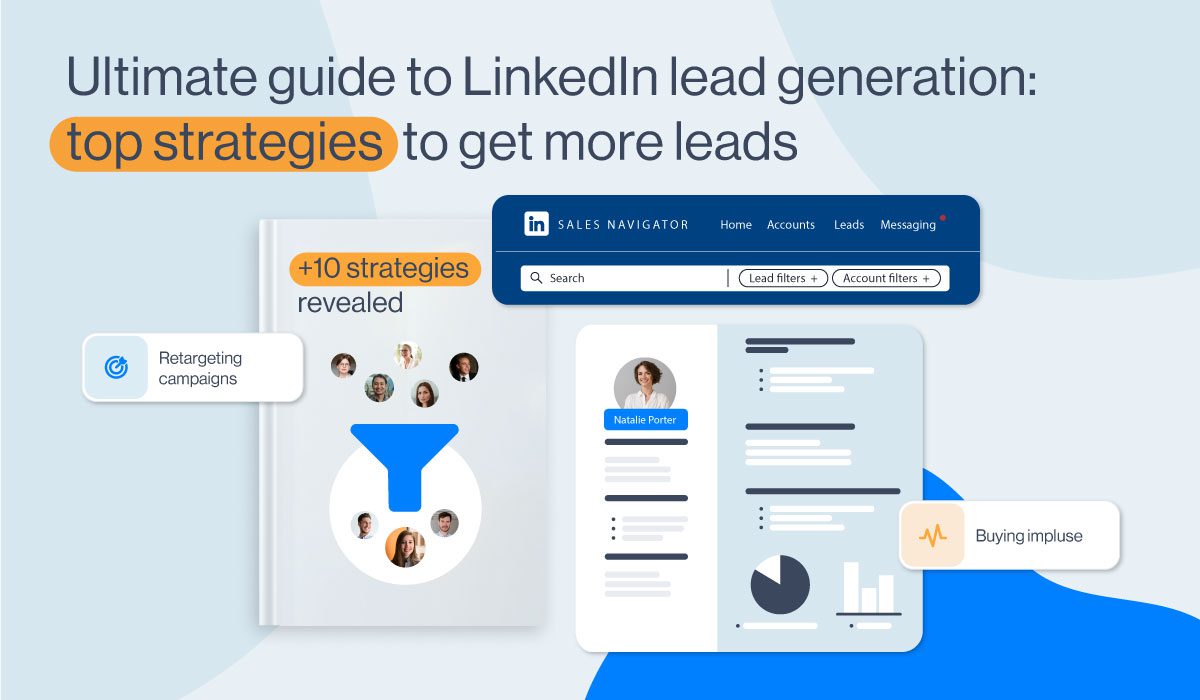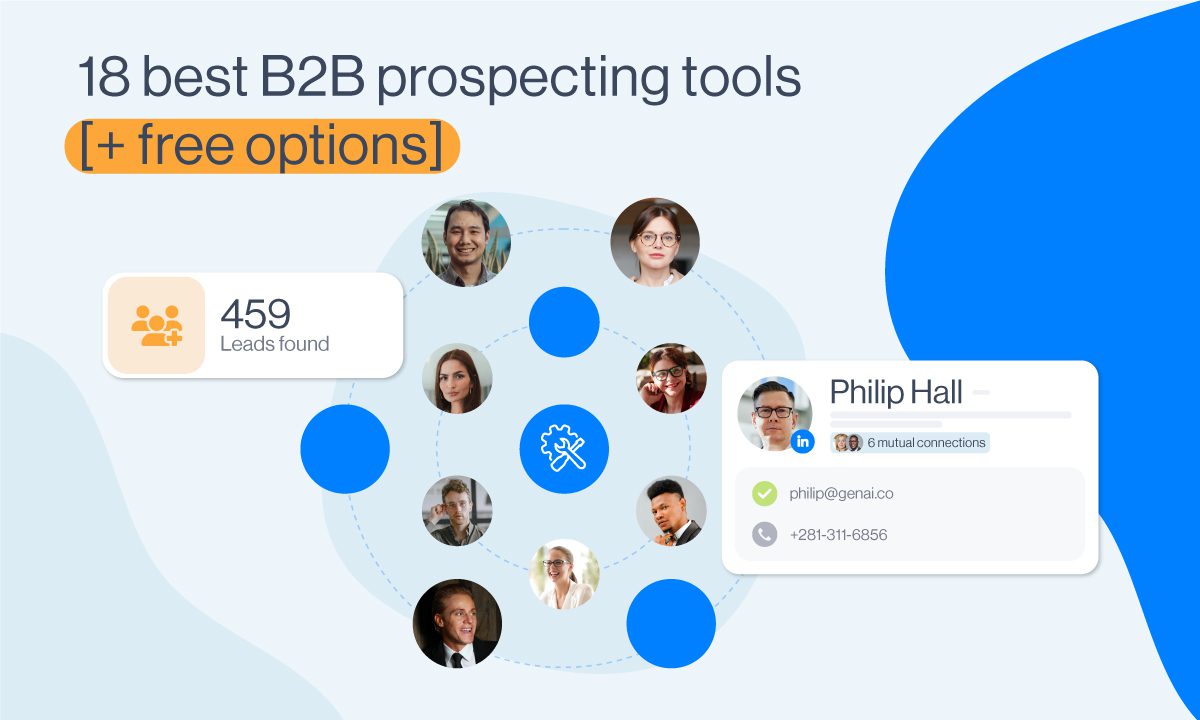30 sources to find leads of high quality & increase sales in 2024
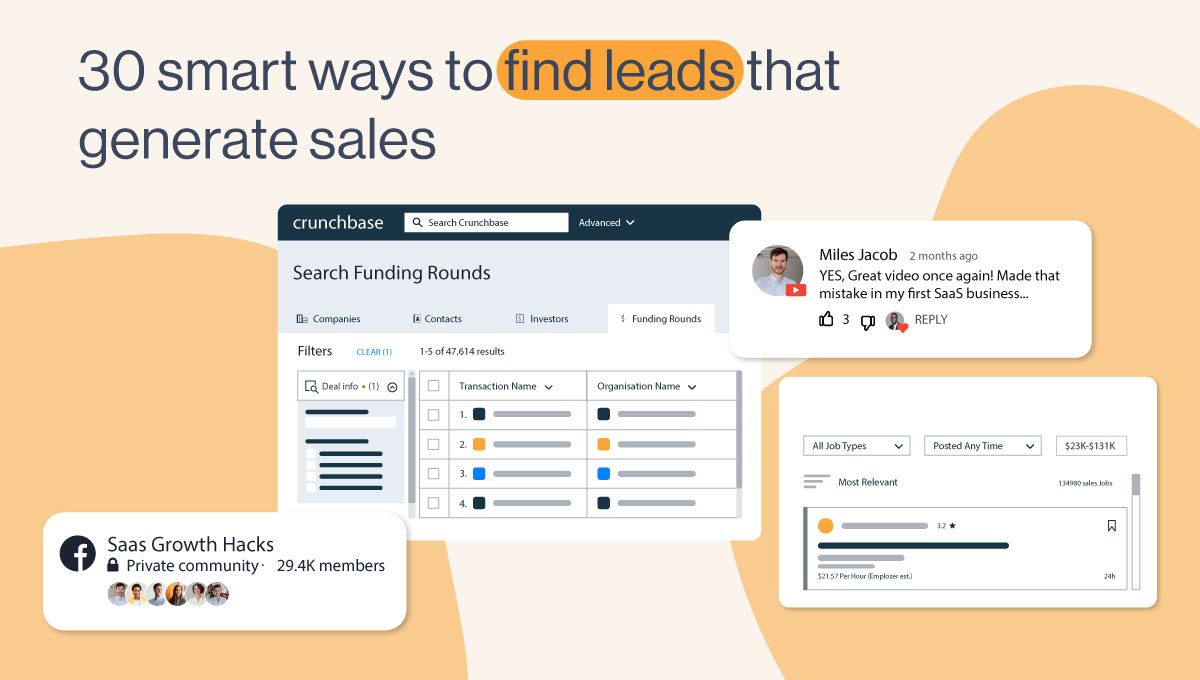
LinkedIn, as the main professional network, with 1 billion users, is the number 1 tool to help you find leads.
Using LinkedIn lead generation is great. However, there are other sources you can use and combine with LinkedIn to reach more high-quality leads. Extra targeting work always pays off.
We’ve done the work, researched, and analyzed creative ways to find these leads for your business besides our favorite targeting hacks on LinkedIn. This blog will show you lead generation sources that can be beneficial for your outreach efforts, match your ICP and Buyer Persona, and actually convert.
Let’s jump right in! 🏊
What is a lead?
A business or sales lead is a potential customer who is interested in your product or service. Salespeople use lead generation methods to find leads from multiple sources. Then, they reach out and follow up with each one continuously to warm up the lead and convert them.
Leads vs. prospects
A prospect is a qualified lead. For a lead to become qualified, they have to match your ICP, and you need to interact with them. Once they show interest in your product/service, they become qualified and can continue their journey through the sales process.
How to define and find leads
If your goal is to find leads of high quality, cold outreach can be a powerful tool for building solid relationships. If done right, it could help you close more deals. This could depend on multiple factors, ranging from a catchy email subject line and a powerful call to action to creating a strong follow-up email after no response campaign flow.
However, before you get into outreach, your first job is to define your target audience. Here are the 3 main things to consider. 👇
1. Build your inbound strategy
To maximize results, you should consider investing time and effort into building your inbound strategy as well, as inbound and outbound work well together.
Make sure to build your website and fill it with educational content, such as blogs, downloadable templates, lead generation forms, case studies, and documents. Your support team should always be available, and the support chat icon should be visible on the homepage.
2. Define your ICP and Buyer Persona
Both the Ideal Customer Profile and Buyer Persona are your essential documents for defining the type of company or person you’ll target with your outreach. Before you go out to find leads, you should define both.
Just a reminder, the Ideal Customer Profile describes the company that would benefit the most from your product or service. These companies should have the fastest conversion cycle, highest LTV, and highest customer retention and be willing to refer your product or service to others.
On the other hand, a Buyer Persona describes your perfect decision-maker. In other words, a Buyer Persona is a collection of an individual’s personal data such as age, location, likes, dislikes, goals, wishes, challenges, and motivations.

Ideally, both Buyer Persona and ICP should be based on existing customers and data, as it will help you create these documents more precisely.
3. Create your sales leads personalization document
Social selling is about building relationships and helping your sales leads reach their goals with your product or service. But before you can dive into relationship-building, you should gather personal info about your leads.
To personalize your outreach at scale, you would need to do extensive research on what they do and the content they publish or get more personal by finding their hobby. Start by creating an Excel file with columns like:
- First name
- Last name
- LinkedIn profile URL
- Company
Then, continue by inserting information, such as:
- The topic of the content they published
- What stood out for you the most from the particular post
- School they went to
- Field of study
- Jobs they posted
- Company growth information
- Personalized message intro (the message you can create based on the above-mentioned)
In other words, create a column for everything you can find while researching. This document contains actionable data for your outreach. So, read on to see how you can use and benefit from it.
Pro tip: Before you start your outreach be sure you have your LinkedIn prepared to sell for you.
Why you need to update your lead generation strategies
LinkedIn is still our #1 platform for generating leads, right? However, by using different strategies and sources to find leads apart from LinkedIn, you will gain even deeper insights into your potential ICP or Buyer Persona. This will ultimately help you maximize your sales efforts and results.
Below, we will review a list of 30 ways to find leads online and how to use them. We’ll show you how to automate outreach, save 11 hours per week on manual work, and focus on closing deals. Sounds good? Keep reading! 🤓
30 ways to find leads
1. Find leads on company websites
To find leads on company websites, you identify target companies and visit their official websites. Then, you explore the “About us” and “Team” pages to find the decision-makers. While you’re at it, you should also check the “Contact us” page for general contact info.

Once you click, you’ll usually get to names and titles, sometimes, even with LinkedIn icons, do you don’t have to look for them manually.
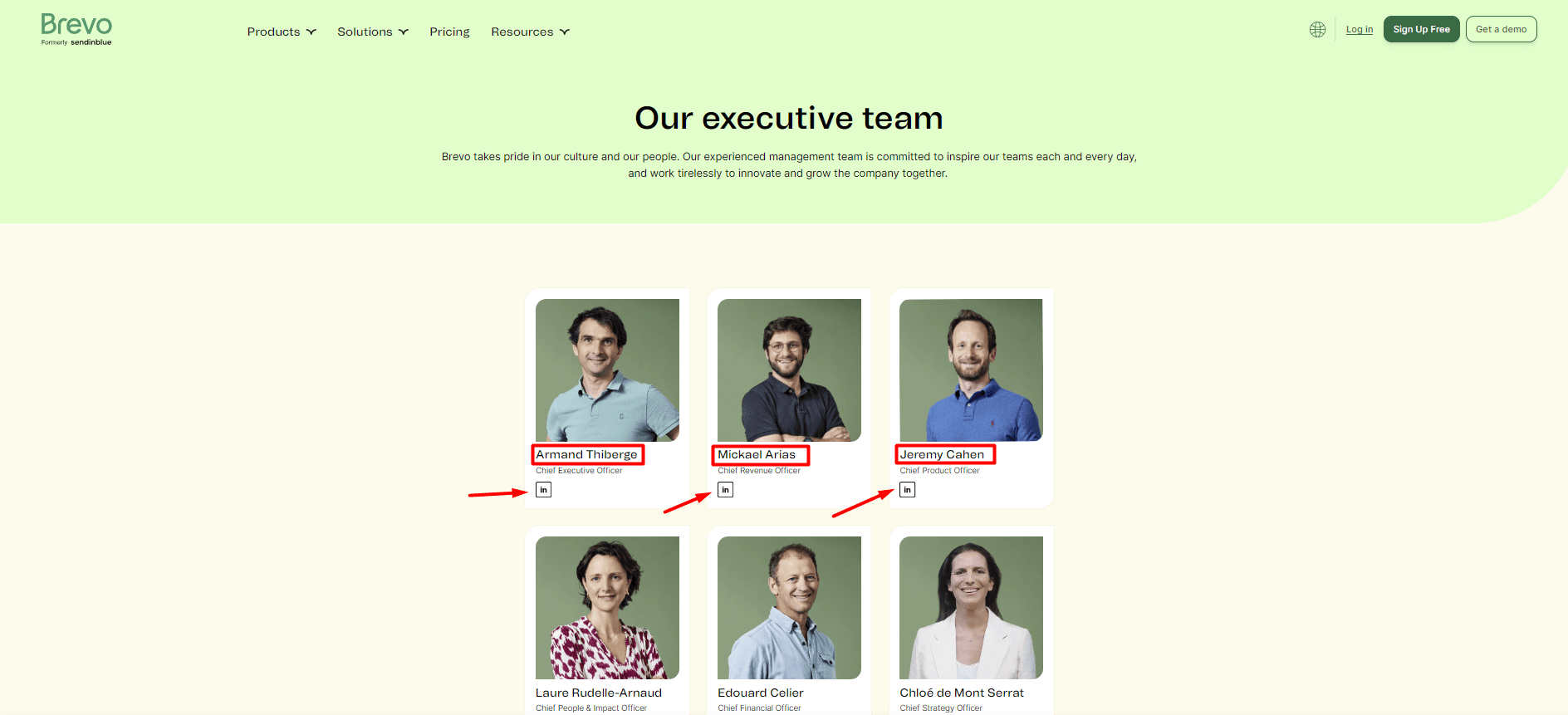
After getting leads on these pages and finding them on LinkedIn, you can send connection requests for a more natural and personalized outreach.

You can also use operators like “site.com email” to find employee email addresses. Or, even better, use an automation tool to Find & verify business emails. Lastly, you can use content to engage and comment on blog posts to get noticed by content creators, start conversations, and get recommended to their colleagues, who are your target audience.
2. Find leads on live events
To find leads at live networking events, you should find relevant events first: industry conferences, trade shows, and meetups. Our advice is to register early to ensure your spot. Also, make sure to review the attendee list if it’s available. Before the event:
- Do the prep work
- Research key participants and companies
- Plan your approach to engage with attendees
In case of a live event, you can go as an attendee, or you can have your own booth. As an attendee or guest, you should attend sessions and participate in all discussions to connect with other attendees. The main goal is to learn about industry news, meet new people, and build relationships with potential leads.
If you have your own booth, you will have a chance to talk to interested parties, distribute marketing materials, and start meaningful conversations. You can also exchange digital cards or connect on LinkedIn immediately.
After the conference, in both cases, you should follow up with new contacts shortly after to keep the conversation going and nurture newly built relationships.
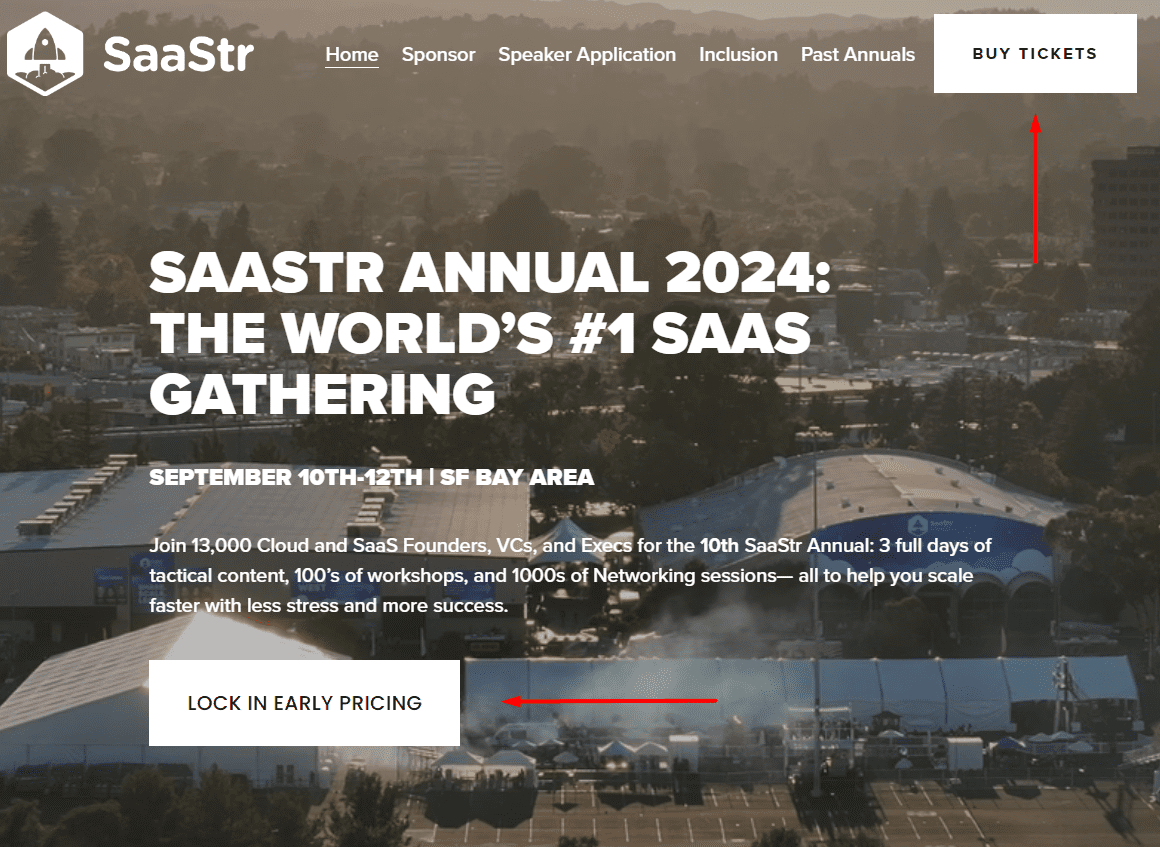
3. Find leads on digital events
With digital networking events, such as webinars, LinkedIn events, and online meetups, the rules are a bit different. Come prepared, research everything about the event and the attendees, and plan your approach.
You should join Q&A sessions, breakout rooms, and chats to connect with attendees. After the event, be sure to reach out on LinkedIn or email and mention your interaction or a specific topic from the event. By keeping the conversation going, you’ll easily generate and nurture B2B leads.
4. Find leads via referrals
You can find leads with a little help from your existing customers. Reach out to satisfied clients, colleagues, and industry contacts for referrals.
To get the most out of your referrals, our advice is to create strong incentives or a reward-based referral program. This will encourage referrers and keep leads coming in. You should also always keep in touch with your network through LinkedIn chat or email.
When you do get the leads from referrals, our advice is to always make sure to follow up and show appreciation to both the referrer and the new contact they brought in.
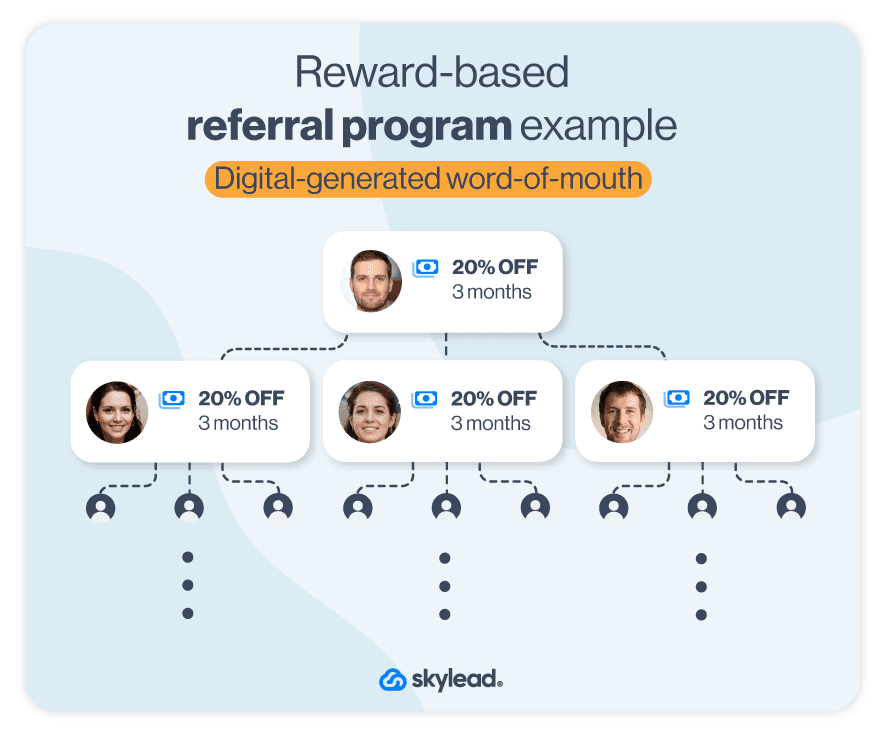
5. Find leads via industry associations
Another way to find leads is to join industry associations and actively participate in their activities. Attend association meetings, conferences, and events to network with other members on LinkedIn or via email.
The trick is to pick associations relevant to your business that have active memberships and ongoing events. For example, if cloud-based companies are your ICP, you could join the Cloud Software Association.
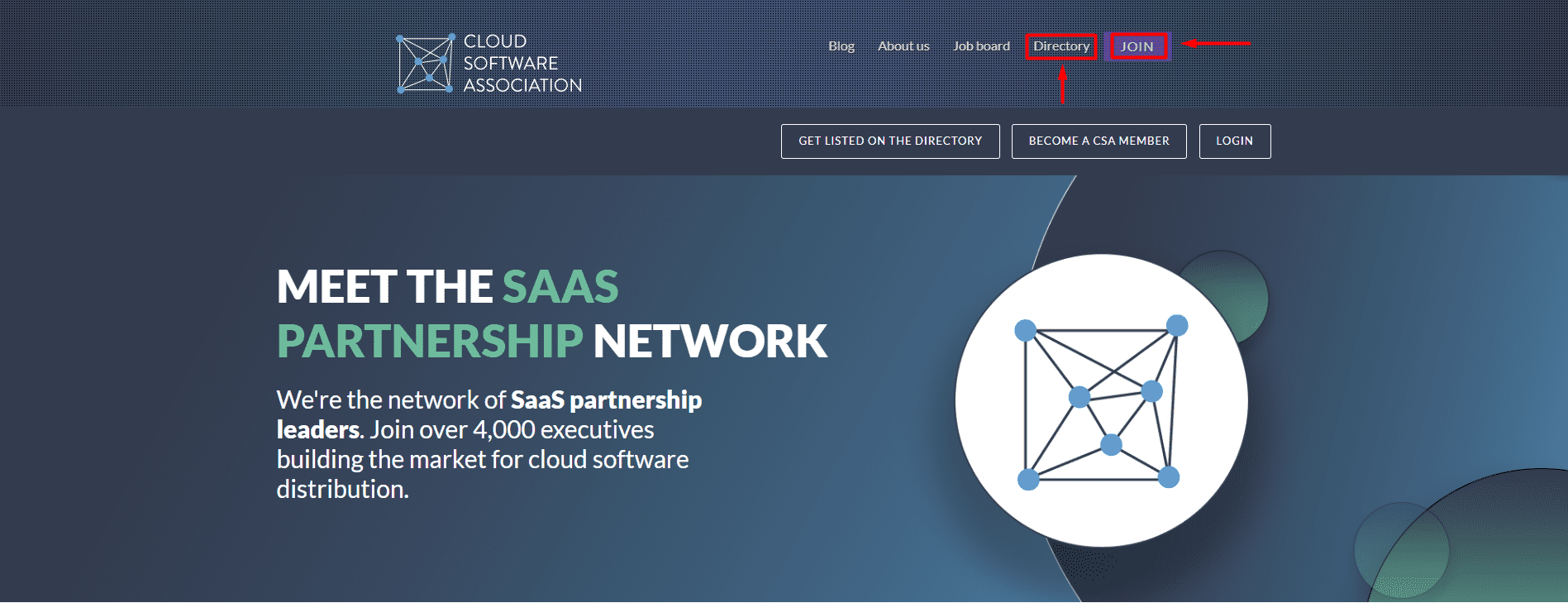
After that, go to their directory and search for businesses of interest. You can use numerous filters to narrow down your search.
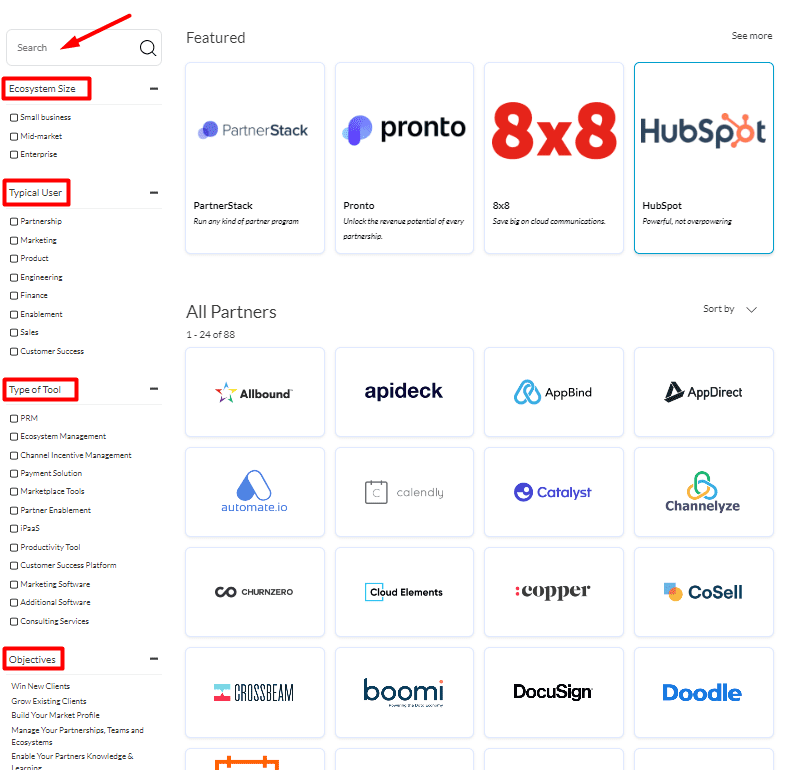
After that, you know the drill. Go to LinkedIn, find the company of choice, go to their people section, find decision-makers, and outreach away!
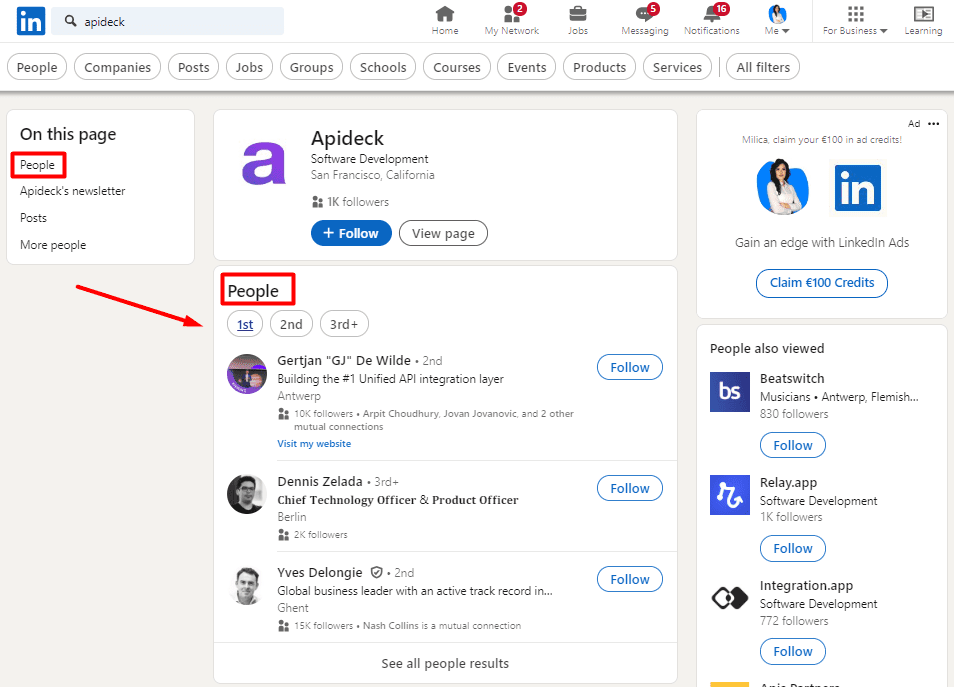
6. Find leads on X
Finding leads on X can be a real game-changer! For example, you can search for your competitors and find negative Tweets or comments. Then try finding them on LinkedIn (if they have their full name and a legit picture) and add them to your CSV file for future outreach. Don’t forget to personalize your outreach and reference how you’ve found them.
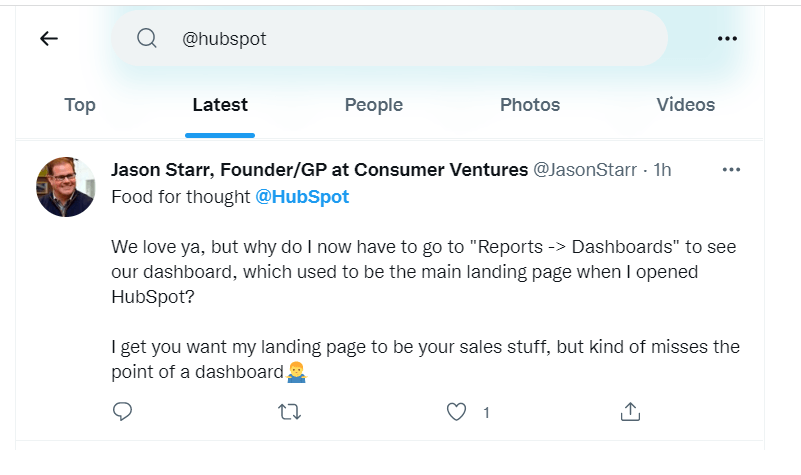
7. Find leads in Facebook groups
Facebook is a perfect place to find your Buyer Persona. However, you just need to dig a little deeper to find them, and join a couple of groups here and there.
The first thing you need to do is to research and find the Facebook groups your sales leads follow. Then, join these groups and wait for approval. From there, you can find your sales leads by the posts they have published. The only thing you need to do is search the group by the keyword.
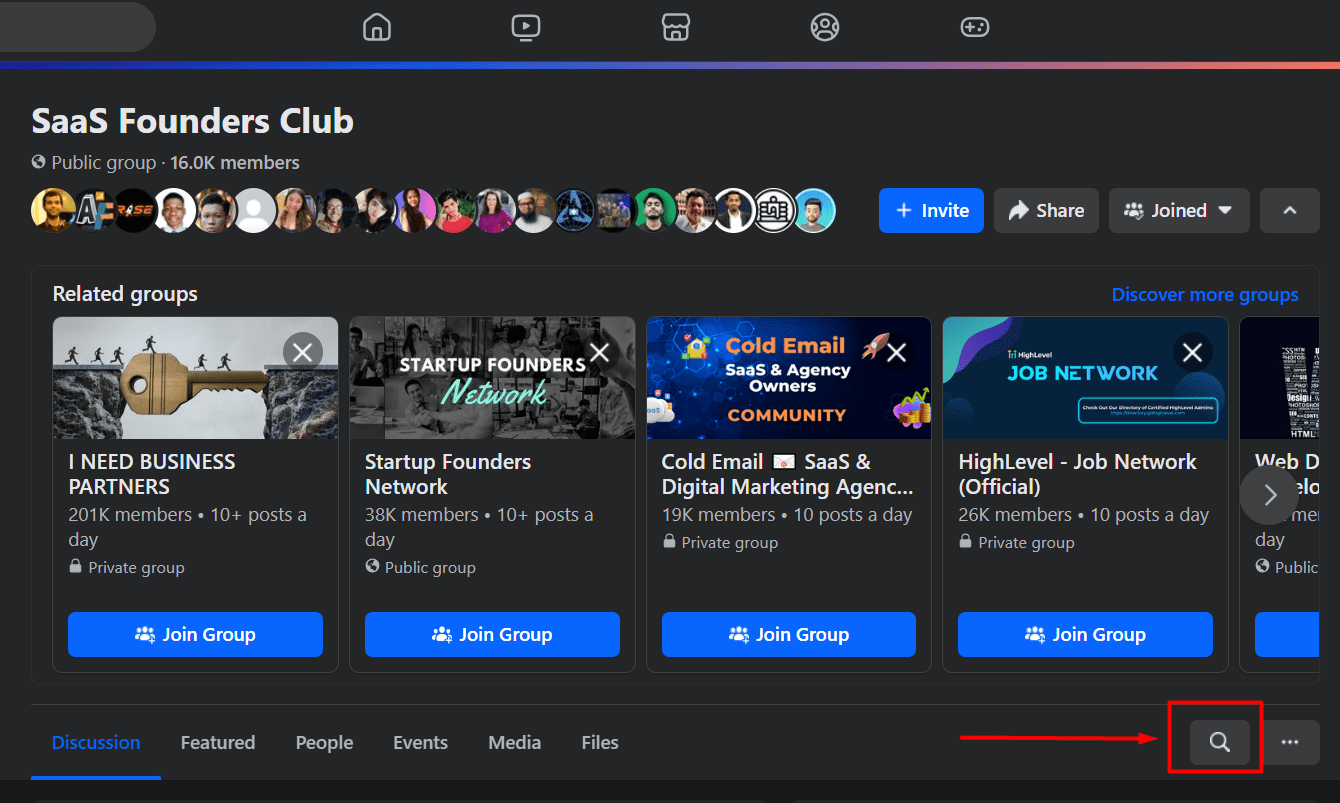
You then search sales leads by, for example, the exact pain point they experience or the goal they want to achieve. This is where you find potential interested parties for your product/service.
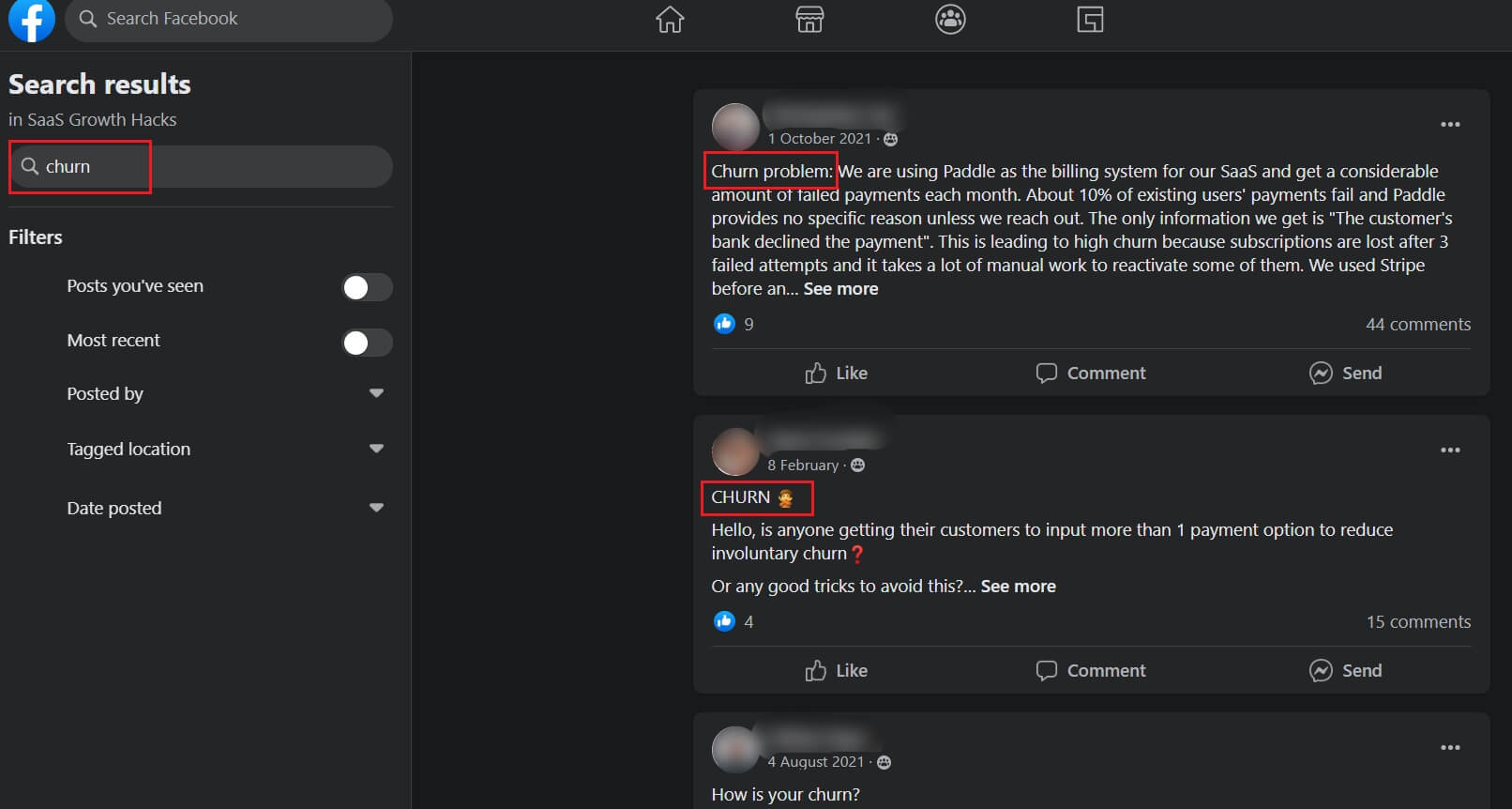
You can message the people who posted directly on Facebook or, better yet, connect with them on LinkedIn and begin your outreach campaign.
8. Find leads on Instagram
Instagram is all about good visuals, hundreds of followers, but also finding leads. Yes, we’re not kidding. Go to the profiles of companies that are your competitors or have similar ICP and Buyer Persona, go to the followers section, and scroll down to find leads.
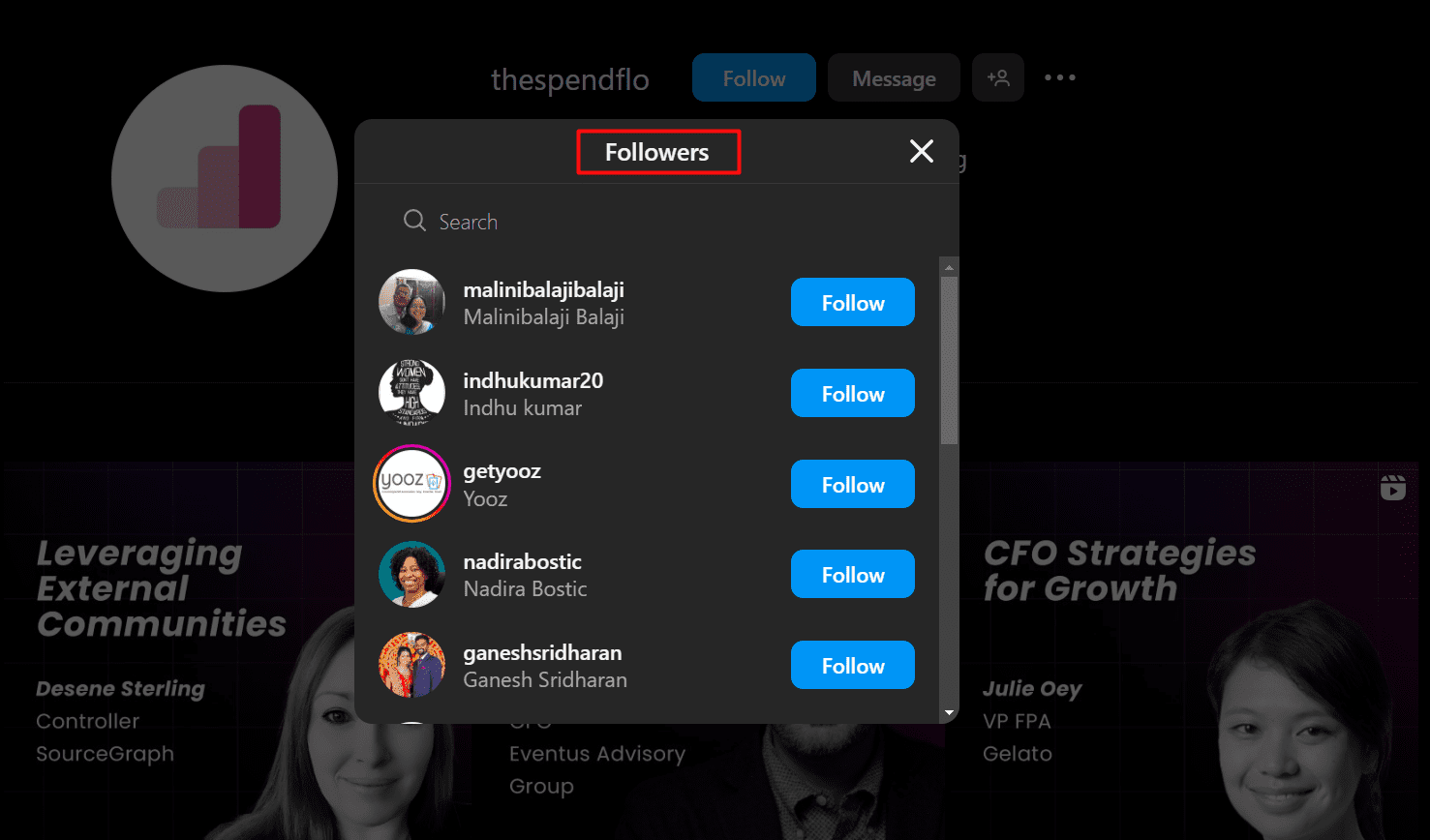
Once you get to them, we’re using our favorite lead gen ally - LinkedIn 👇
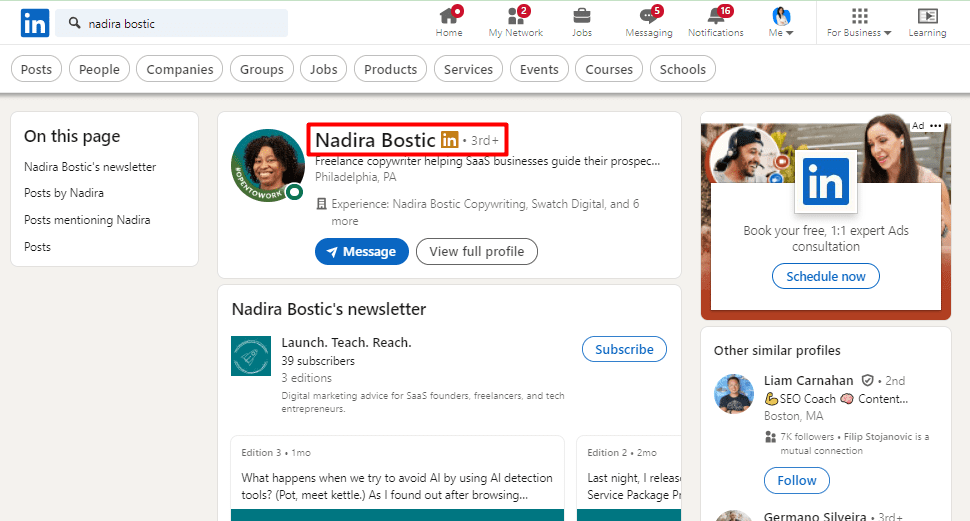
9. Find leads on Reddit (Specific Subreddits)
If done right, finding leads on Reddit can be incredibly effective. Here’s what you’ll need to do:
- Find relevant subreddits
- Actively participate in discussions
- Find content that discusses problems you’re solving and mention your product without sounding too salesy (use the Search comments option for keywords)
- DM those people and ask to connect on LinkedIn
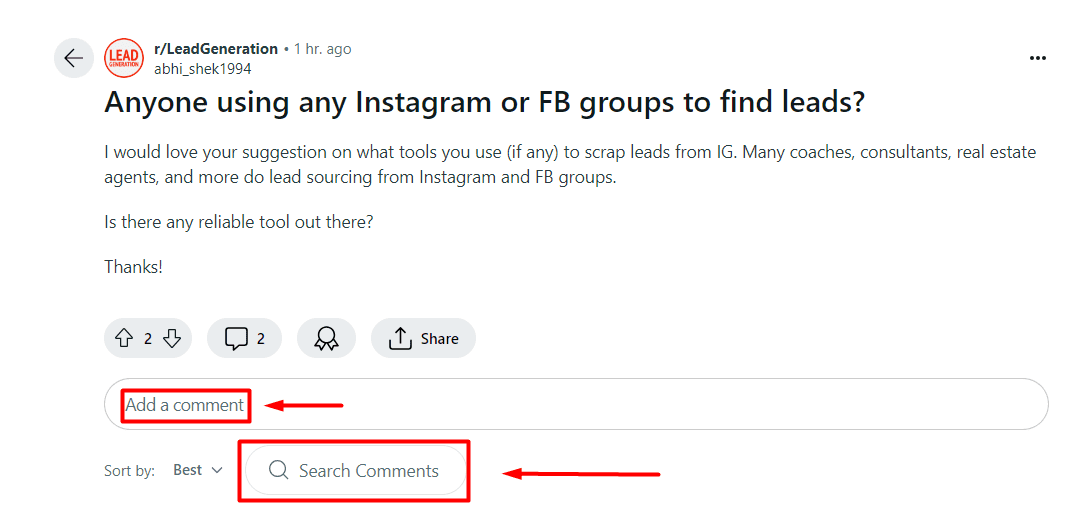
From what we’ve learned from our own experience, people will see your comment as useful and reach out to you themselves, asking for more information. This is usually a sign that you’re providing value where value is needed, so keep up the good work!
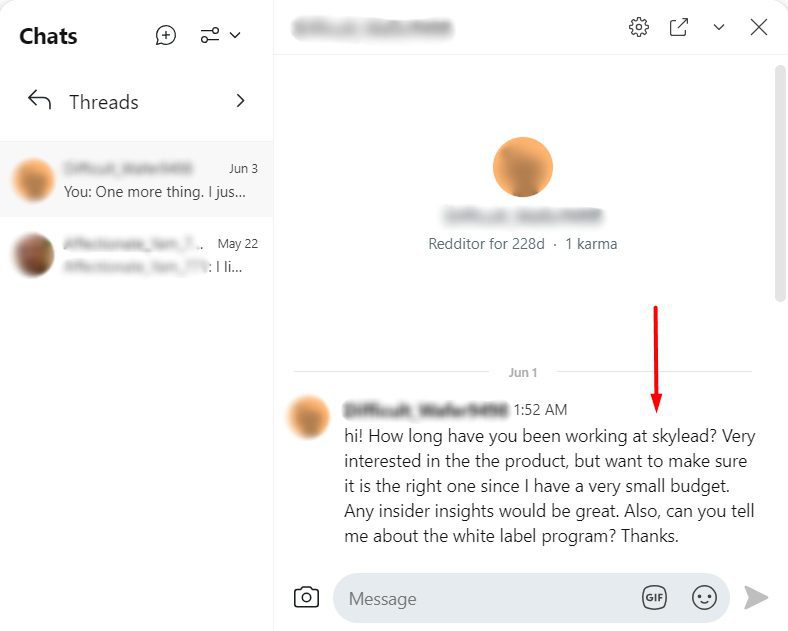
10. Find leads with gated content
You might know this already, but using gated content with lead capture forms is a smart way to get leads. The marketing team creates:
- E-books
- Whitepapers
- Exclusive webinars
- Downloadable templates
Then, they send the list of leads to the sales team, who creates outreach campaigns. In fact, this is how we did it: We’ve offered a sales book that helped us grow our business from 2,500 to 10,000 users in just 9 months. In exchange, people leave contact information through a simple sign-up form on our website. We’ve also promoted our gated content through blog posts, social media, and email campaigns to drive more traffic and capture more leads.
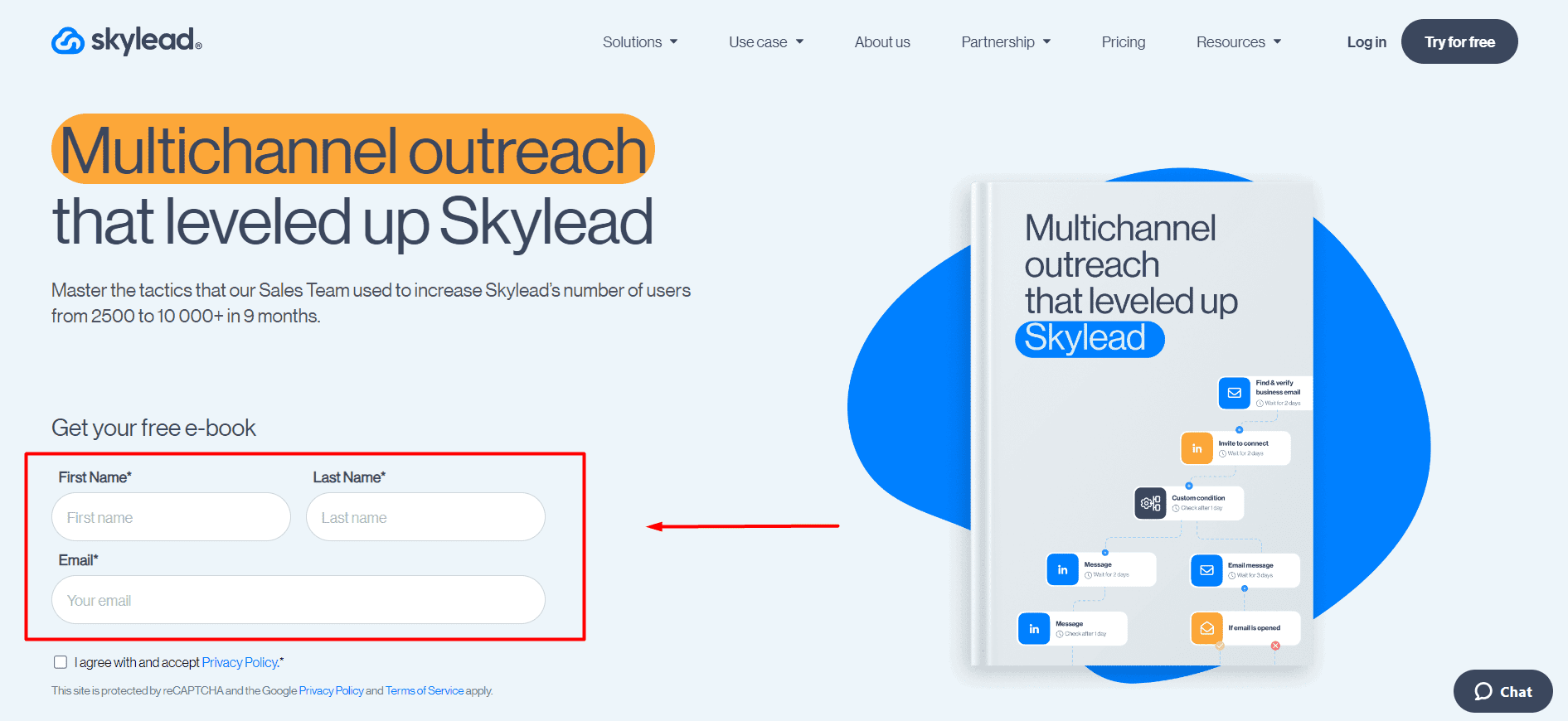
Here are our tips on how to attract leads with quality gated content:
- Strong CTAs: Use clear and enticing calls to action to encourage users to access your gated content.
- Tailor your content: Tailor your gated content to specific segments of your audience to increase relevance and engagement.
- Follow up quickly: Send a follow-up email immediately after someone downloads your content to nurture the lead.
- Use analytics: Track the performance of your gated content to understand what resonates best with your audience.
- A/B test: Test different formats, headlines, and designs to optimize your landing pages and sign-up forms.
- Offer multi-step content: Create a series of gated content pieces that build on each other to nurture leads to conversion over time.
- Integrate with CRM: Make sure your sign-up forms are integrated with your CRM to streamline lead generation.
11. Find leads on review websites
Review websites can be very useful for finding leads. Here are a few review website examples:
Just go to the review website of choice, find your competitor, and then search for people who posted negative reviews. For example, here’s a person who is not satisfied with calendar software. Find them on LinkedIn and put them in your CSV file so you can include them in your automated outreach campaign.
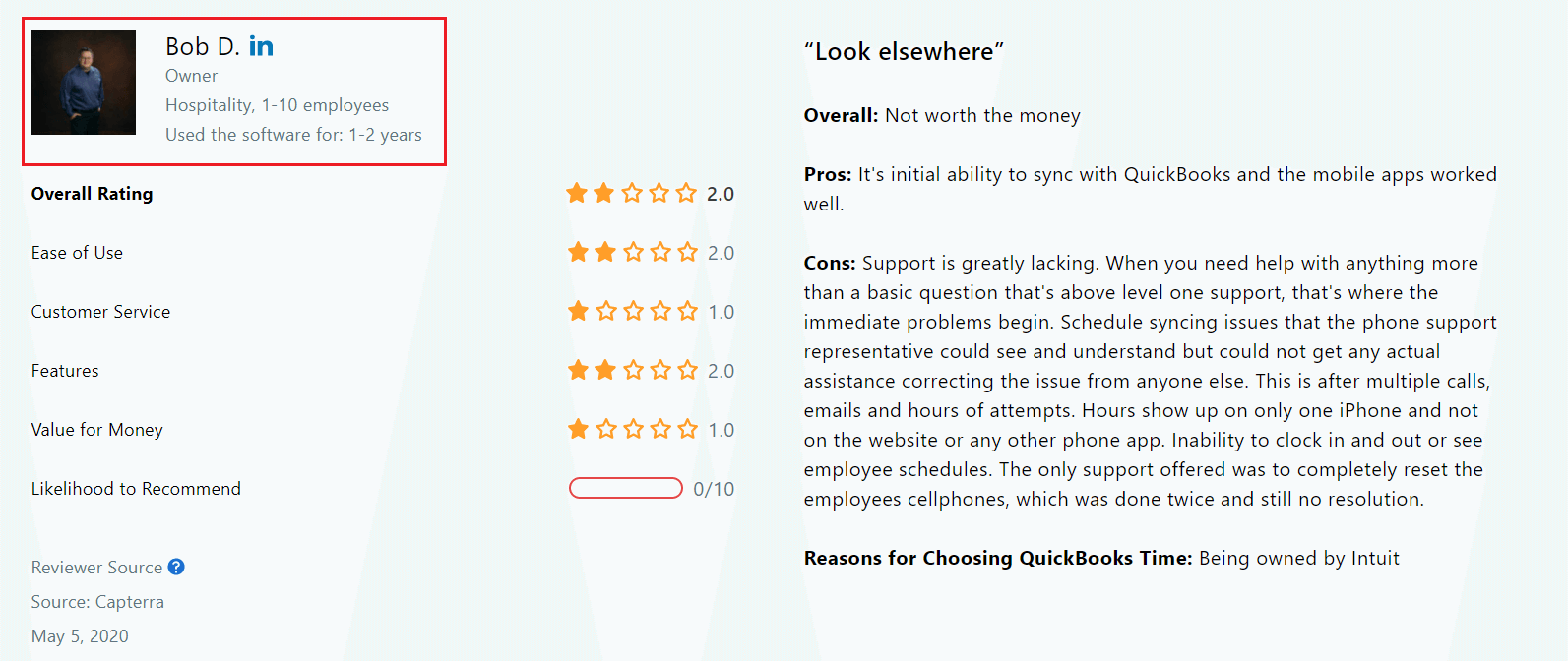
12. Find leads using a LinkedIn X-Ray Search
LinkedIn X-ray search, a.k.a. Boolean search, is a method that allows us to research our leads on Google without using LinkedIn’s internal filters. But why would you do that if you have LinkedIn? Well:
- You’ll get more search results
- You’ll get to see 3rd-degree and out-of-network connections, too
- More relevant search results, thanks to Google’s different algorithms
- A more comprehensive search (thanks to the * symbol (Asterisk) that includes missing words in your search results.
Now, to find leads using LinkedIn's X-ray search, use Google with specific search operators. Enter "site.com" followed by relevant keywords, such as job titles or industries (e.g., "site
.com marketing manager"). This narrows down the LinkedIn profiles that match your criteria. Refine your search by adding location or company filters to target specific leads effectively.

After you’ve pinpointed your leads, you go to LinkedIn and copy-paste their info to your CSV file for future outreach.
13. Find leads in CRM databases
Up until now, we’ve been talking about finding leads elsewhere, but you should not forget to look for leads among your own clients. Or rather, the ones that ended up in the churn box. Go to your CRM database and find the email addresses of clients who went in another direction, so to speak.
Think about why they might have left and use a new feature or update to start the conversation again or rather a check-in message. Since you’ve already had a relationship with them, restarting the conversation should be easier than with cold leads.
Our advice is to review your earlier conversations and create a separate automated outreach campaign tailored for these old/new leads.

14. Find leads via partnerships and alliances
It’s time to partner up! Start by identifying potential partners whose services complement yours or similar businesses that are not your competition. Reach out to these companies to find out about mutual benefits and opportunities for collaboration. Partnering up can open doors to new networks, which will increase your lead pool.
Here’s an example. Our partner included this image in their newsletter when we launched Product Hunt. It was a perfect opportunity to show us off to their user base and inform them about our special event.
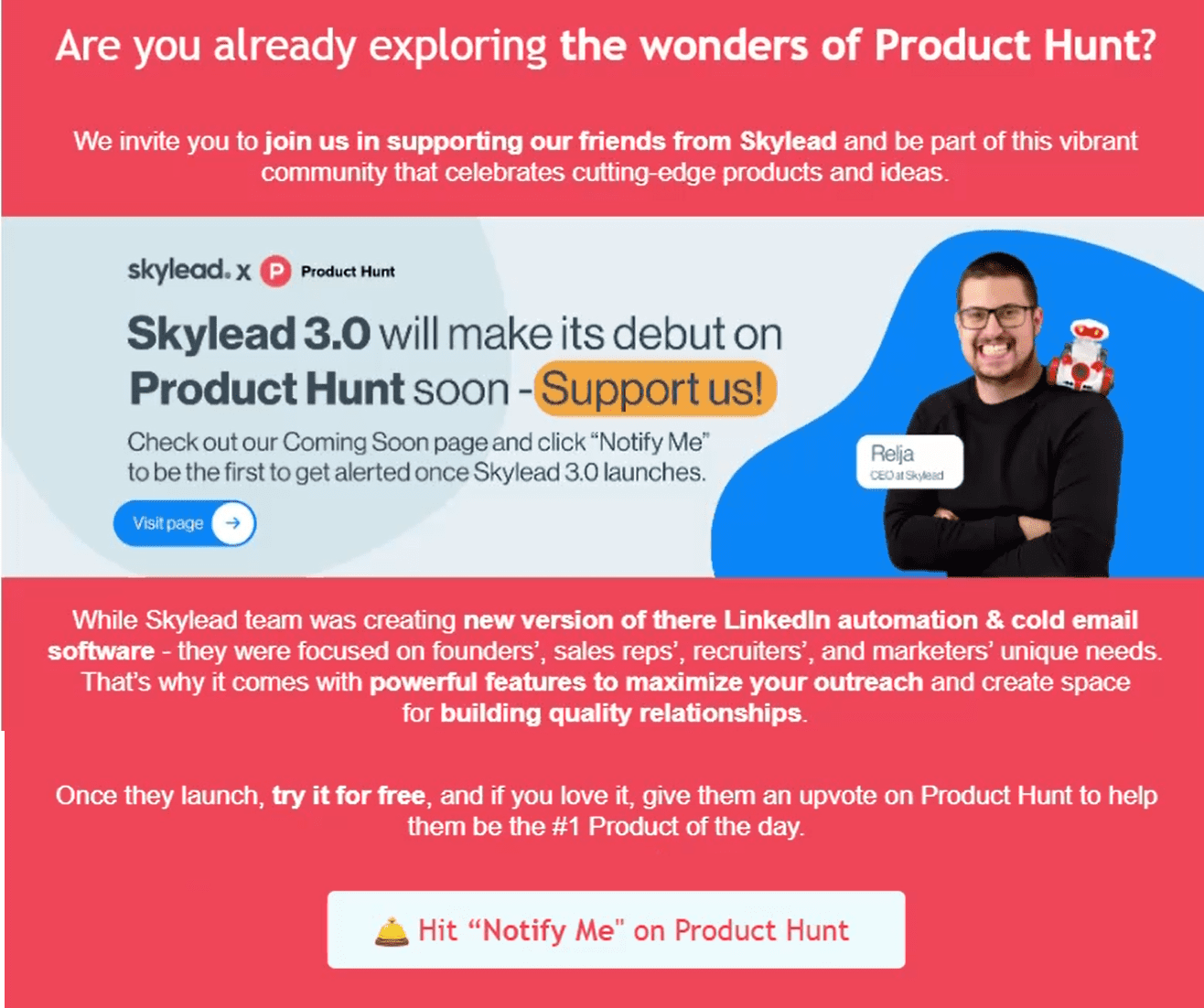
This also works for sharing gated content and referrals through mutual B2B marketing strategies.
15. Find leads via job listings
When a company is hiring, it usually means one of these 3 things:
- They have a bigger budget for the department
- Something is not right in the current process
- Or a person from the team is leaving for a certain reason.
Job postings mean a department change, and you should seize that opportunity. This is where recruiters usually spill the beans, so keep an eye on the department and industry of interest.
For example, let’s say you are selling team management software for remote teams. You can go to any job search website like Indeed and filter the jobs by industry, job type, and remote work.
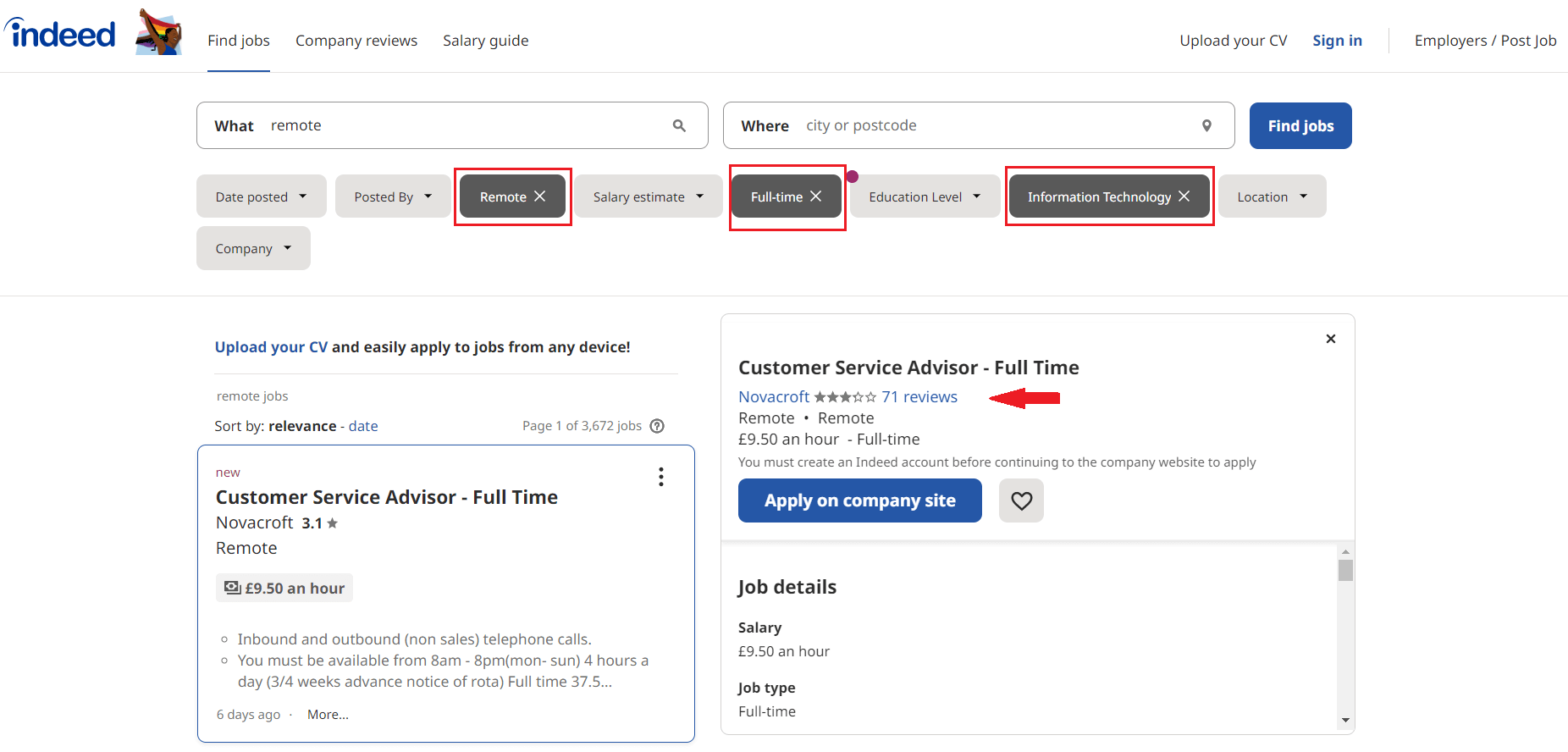
This is a great place to find your ICP and go from there. In addition, if you have a LinkedIn Premium account, you can check out the company’s growth insight on LinkedIn and move on to find your decision-maker.
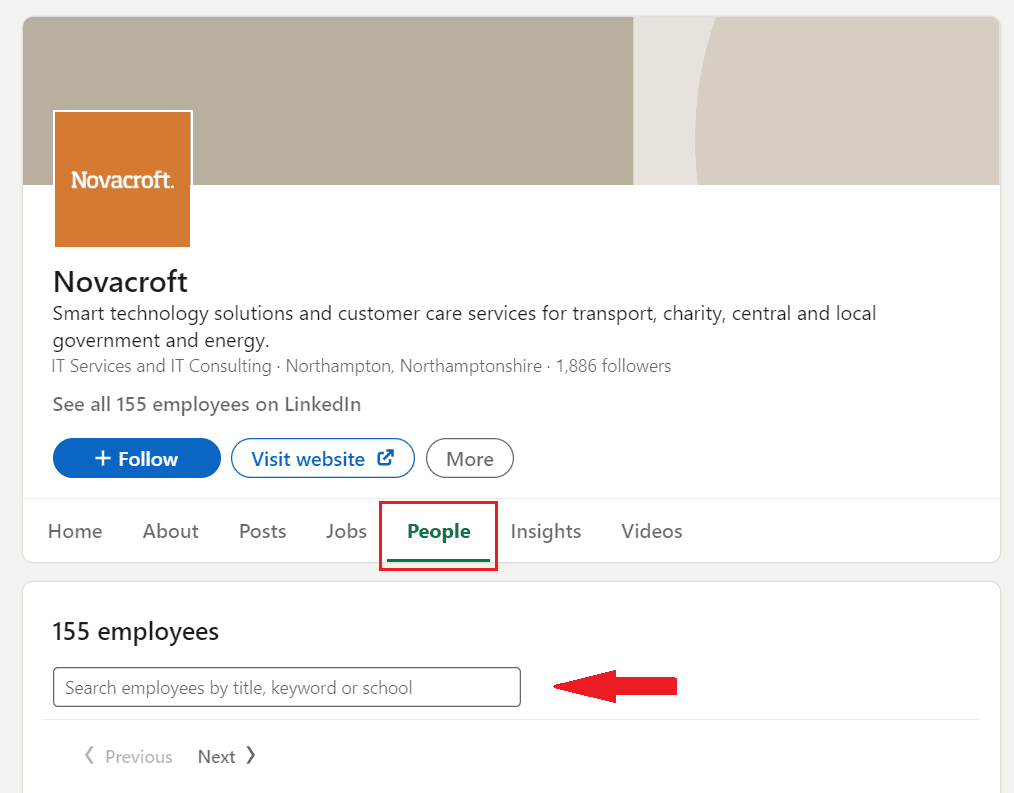
You can do this process on LinkedIn, as well. However, keep in mind that if your ICP is a small company, you might not be able to see their job posts unless you are their 1st-degree connection or they promote these posts on LinkedIn.
16. Find leads using LinkedIn topics
Another place to look for leads on LinkedIn is LinkedIn topics. You get to go through industry related questions, discover key contributors and find your Buyer Persona. You can also filter topics by industry and narrow down your lead search.
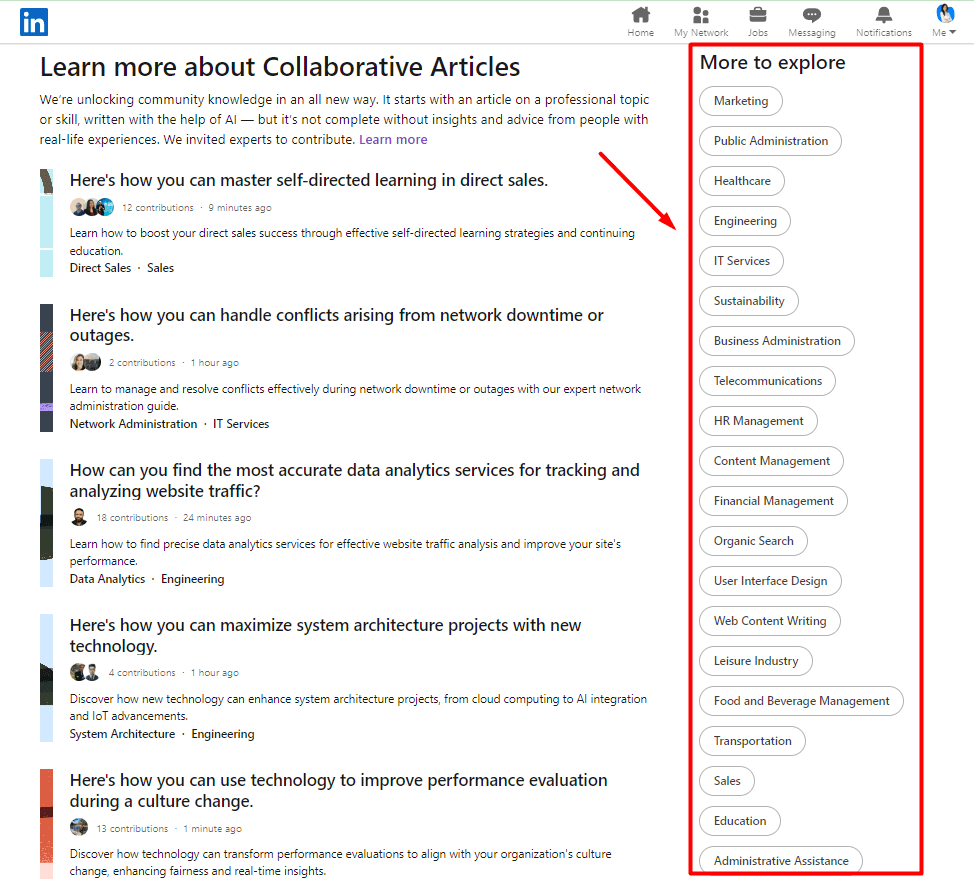
Once you click on a topic, you’ll see different sections and related subtopics you can access. You can go through the contributors listed on the right. Then, you can find the ones you’ll reach out to easily since you’re already on LinkedIn. Our advice is to reference their contribution to a certain topic as an opener. It’s that easy.
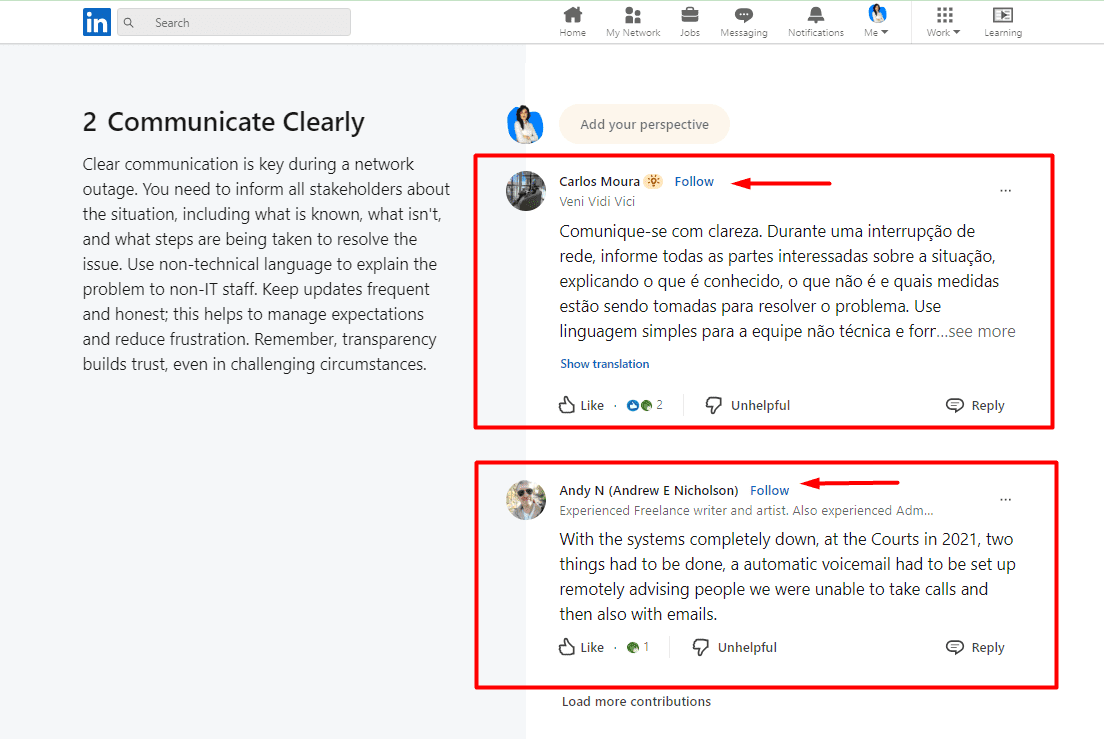
17. Find leads through recently funded companies
Another great way to find your ICP is to research what companies recently got funded. Since we know they’ve got money to invest, make sure their priority is growth.
So, to find these companies, you can choose one of two ways. First, you can use company data websites, such as Fundz, TechCrunch, or Crunchbase. Crunchbase makes it easier to find information as you can filter the companies using the free Funding Rounds feature.

Secondly, you can Google search for companies using Boolean search operators.

Whatever approach you pick, making the connection with the person from the company that just got the funding and building the relationship can result in a long-lasting partnership.
18. Find leads through Slack communities
Slack channels offer many possibilities, from finding leads to learning something new. The best part is that you can contact each member privately via chat.
There are different communities all over Slack, and you can explore and find the ones your Buyer persona joined. For example, a B2B content director must be following the content trends, so you will most likely find them in the Superpath Slack community under the content-b2b channel.
What’s best is that Slack channels like RevGenius or The Trenches are very educational, supportive, and welcoming. So, apart from finding sales leads and reaching out to people who face a problem your product can resolve, you can enjoy your stay and learn about the changes in the market.

19. Find leads through YouTube comments
To find leads in YouTube comments, all you need to do is find the videos your sales leads might be watching and look in the comment section. Our advice is to find someone with a legit profile, meaning with their full name and picture. You can use this information to find these individuals on LinkedIn.
Let’s say your sales leads are SaaS founders. Consequently, you would find a video related to SaaS, such as this one. 👇
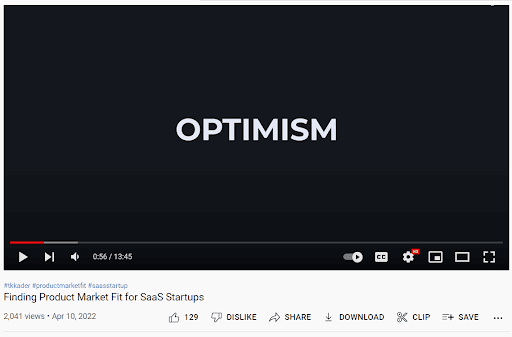
Now, scroll down to find a comment such as this one:

Now go to LinkedIn and search for the person. You can contact them there directly or save their profile in a CSV file with remarks for a perfect conversation starter.
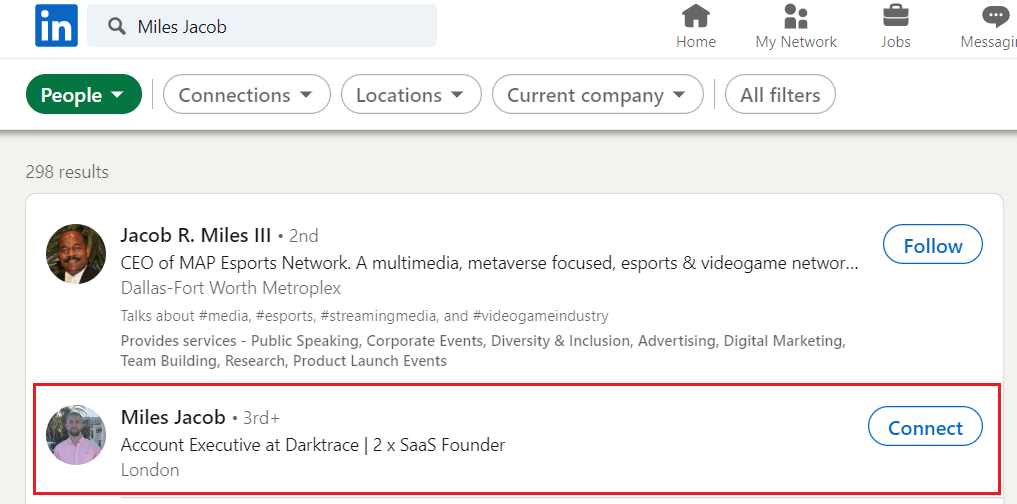
20. Find leads via LinkedIn events
Using LinkedIn events for lead generation is a great strategy for connecting with potential leads and clients. Go to LinkedIn’s search bar, type in a keyword of choice, and select “Events” as your main category.
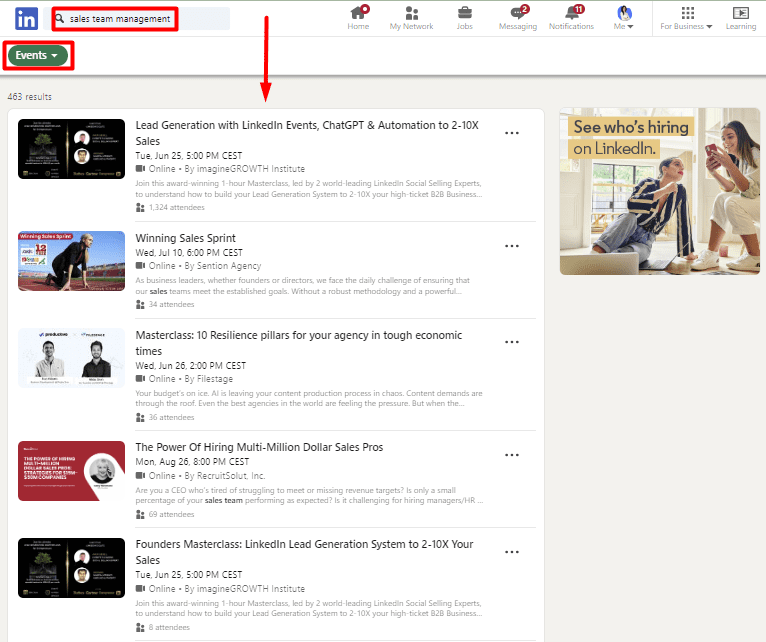
To access the attendees' list and find those leads, you have to click on “Register.”

After that, you should click here 👇
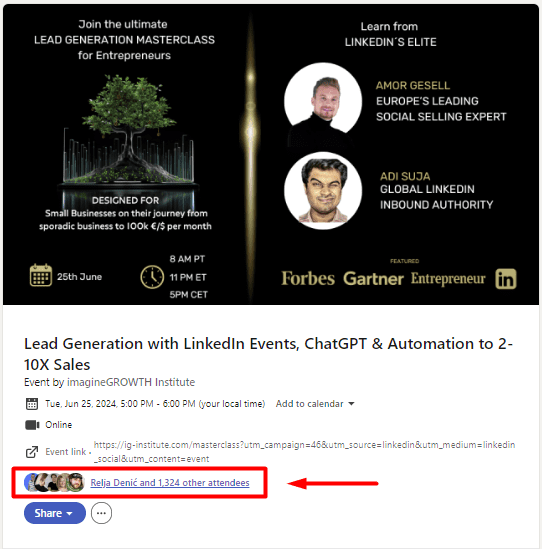
Use filters to narrow down your search to match your Buyer Persona as closely as possible. The only thing left to do is attend the event and use some of the topics and information mentioned in the event to break the ice with your leads.
21. Find leads via Product hunt
Your journey on Product Hunt begins with discovering new and trending products in your industry. There are two ways to find leads here. Firstly, you can go to relevant discussions, watch out for questions from your target audience, and find them on LinkedIn.
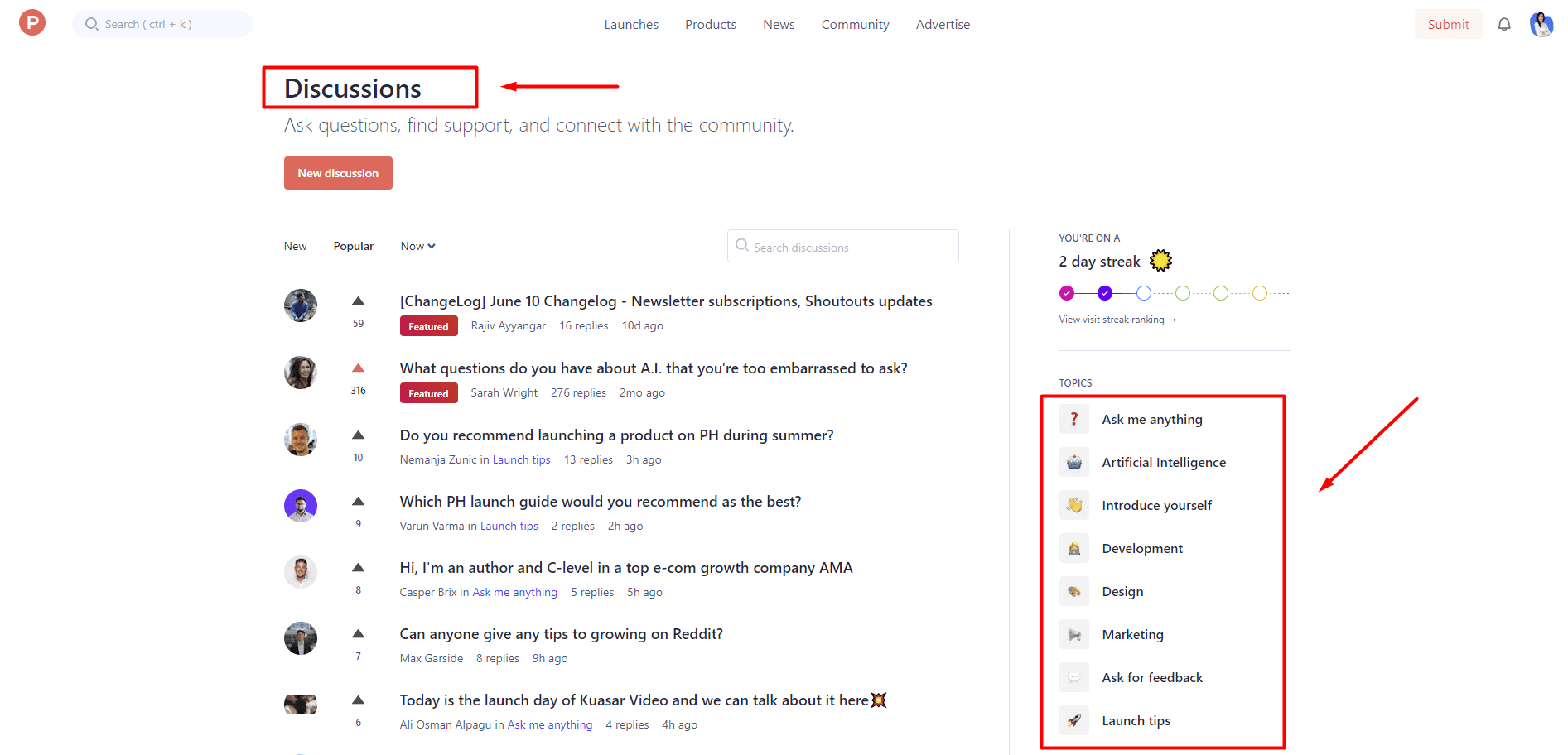
Secondly, if SaaS is your industry of choice, you can watch for new software or releases and find makers.
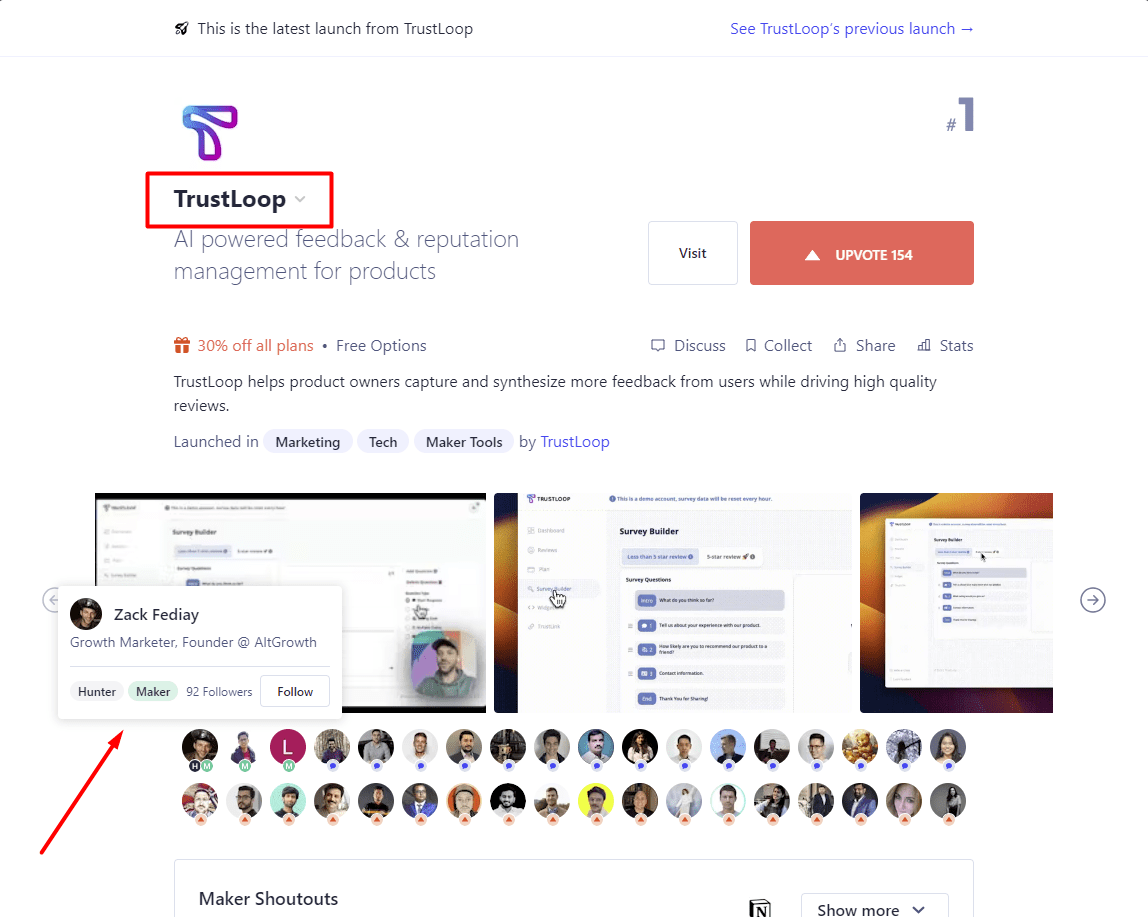
Then, the only thing left to do is to find them on LinkedIn and put the data and personal reference to your CSV file for outreach later on.

22. Find leads on Medium
Many people of all occupations share their stories and thoughts on Medium, and your sales leads could be one of them. Medium is a blogging platform with over 100 million active monthly readers and 175,000 authors who are thought leaders, journalists, and experts, so you have a deep pool of sales leads to search from.
Also, Medium is pretty easy to use. You just need to type the topic of interest in the search bar and comb through articles.
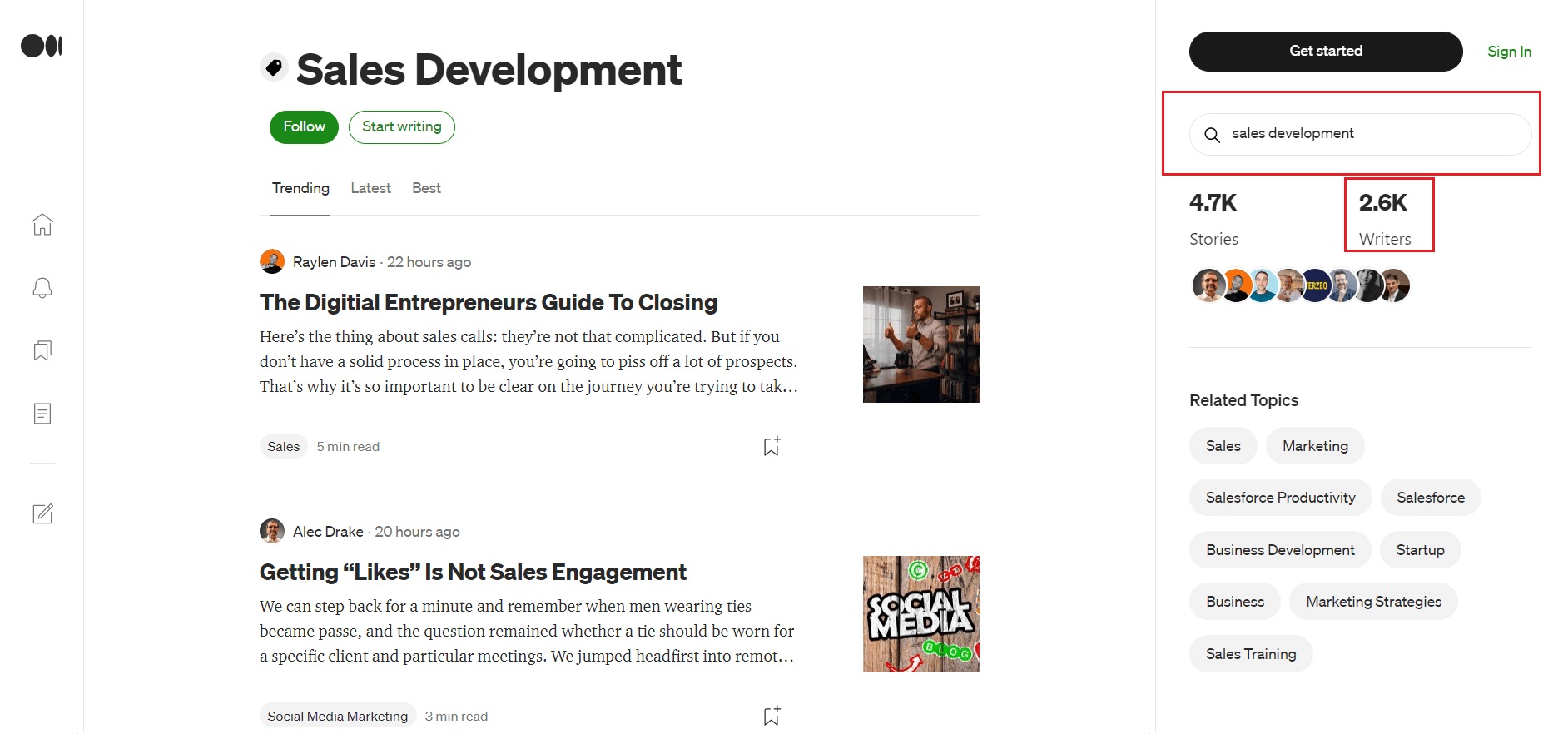
Once you find an interesting post, go to the author's profile. You will usually see their LinkedIn profile or other Social Media URLs in the About section, so it is easy to find leads right away.
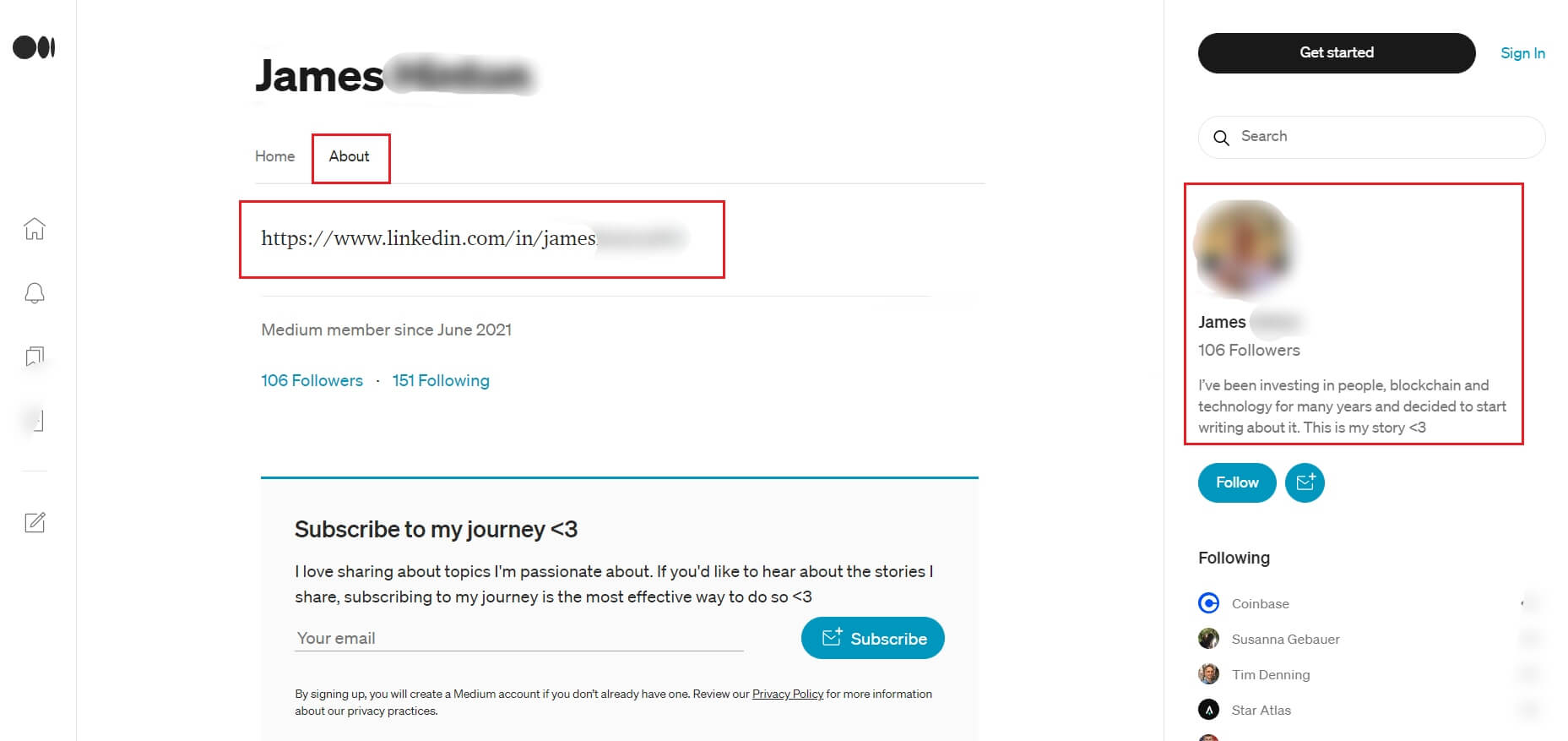
Additionally, you can see the comments and the profile of the person who posted that comment. Your sales leads could be one of them, so you can find them on LinkedIn and put them in your personalized document for further outreach.
23. Find leads on podcast guest lists
Use a simple Google search to find podcasts relevant to your industry or target market. Then, examine video titles and write down the speakers so you can find them on LinkedIn. Once you're ready to reach out to them, use personalized messages where you reference their podcast appearance and explain how your services can benefit them.
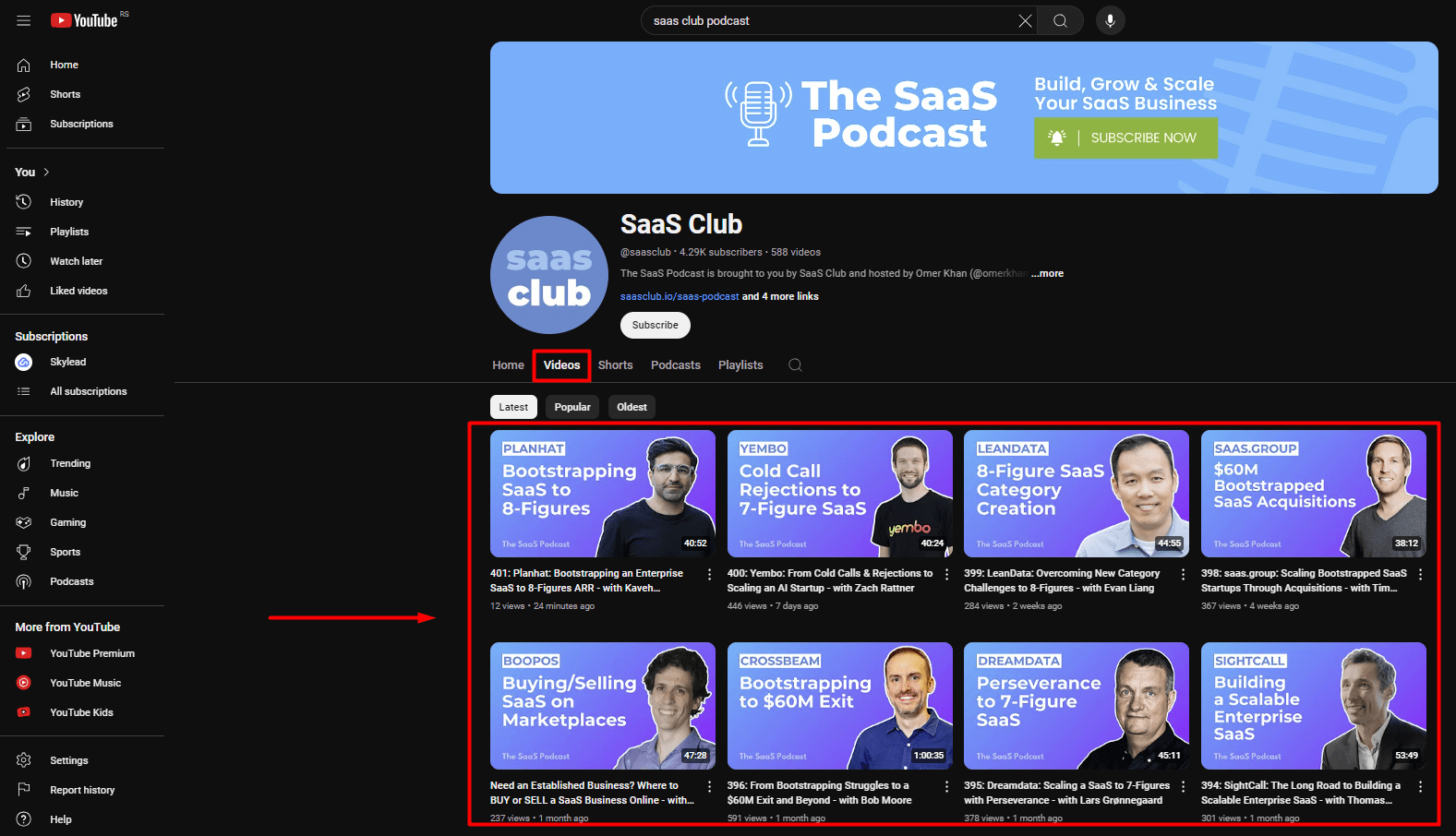
24. Find leads on Discord
Discord is a place where people can communicate with each other via either text or voice chat. Unlike Slack, Discord was initially created as an informal place to hang out with your friends or even play massive multiplayer online games.
However, Discord grew to be more. Now, it is a new hotspot where people all around the world gather to share their experiences and thoughts on all kinds of topics. Thus, many so-called servers, aka groups, have emerged, and you will be able to find the ones of your target audience.
For example, here is what the Salesforce discord channel looks like.
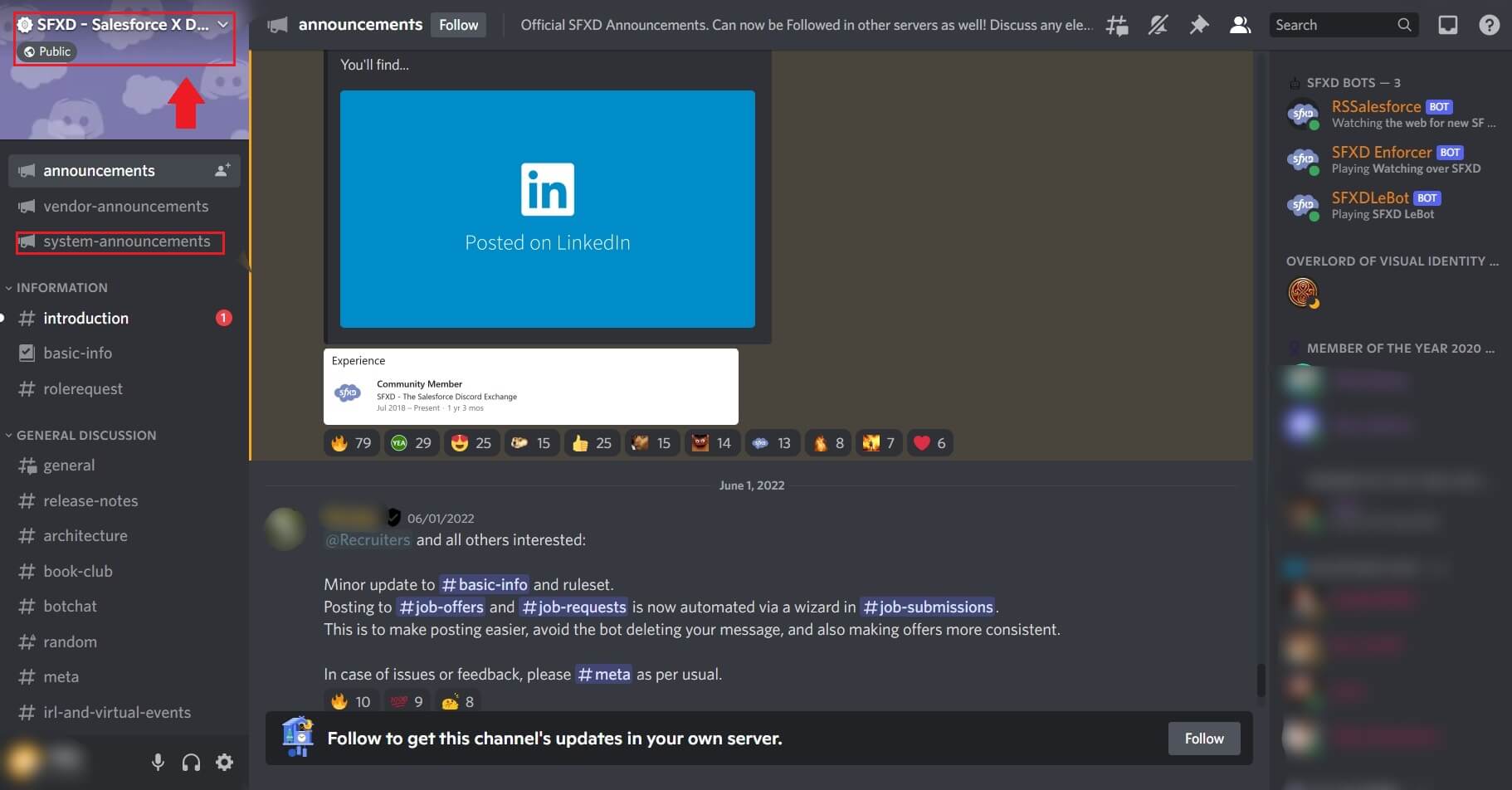
Once you find your niche, join that server, and you’ll get to see a list of all members you can message privately or ask to connect on LinkedIn and take it from there.
25. Find leads on forums and online communities
Online communities such as GrowthHackers or SalesHackers are another place where you can find sales leads. With plenty of topics to search from, you will be shocked by how many discussions and users you will find.
For example, the nice thing about the GrowthHackers community is that you can find the user, see their publications and topics they follow, and choose to follow them or contact them directly. You can also always find them on LinkedIn and reach out from there.
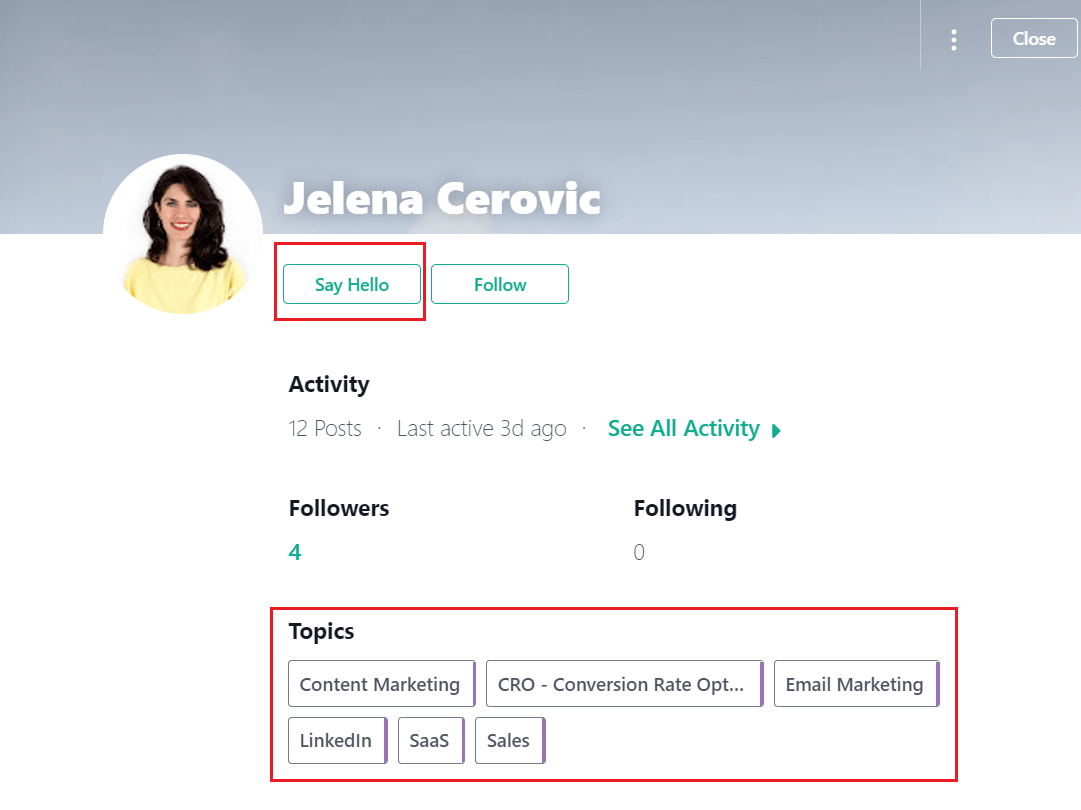
26. Find leads in LinkedIn groups
Despite the common belief, LinkedIn groups can still be useful for something - lead generation. To find leads in LinkedIn groups, you should look for relevant ones from your industry and join.
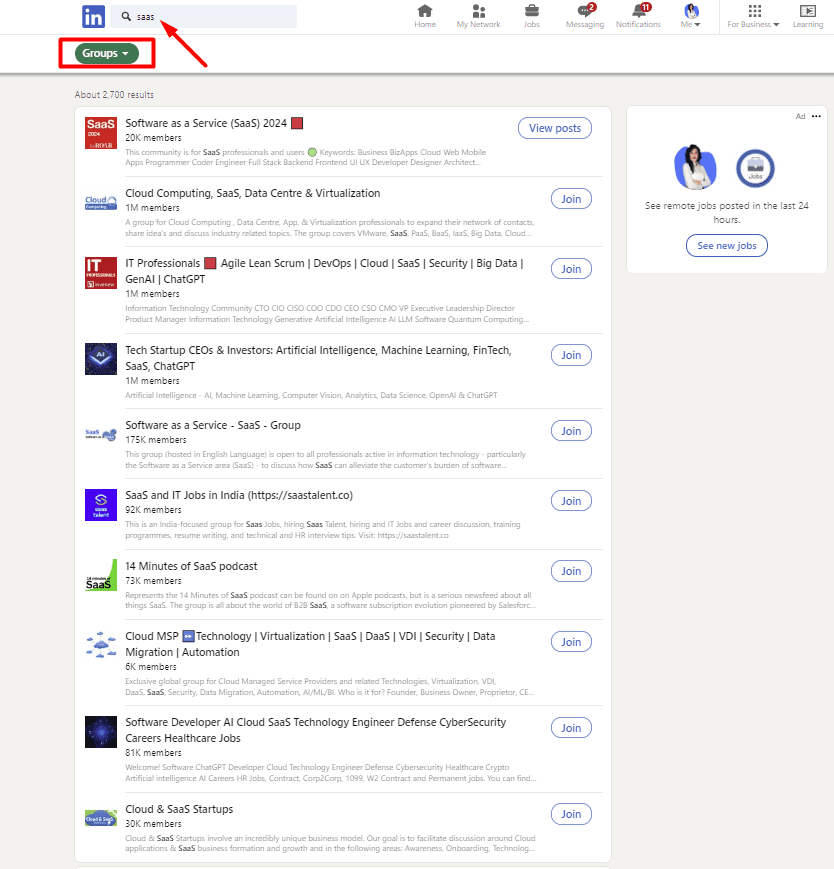
Once you join, you’ll get access to a members list. Click on “Show all.”
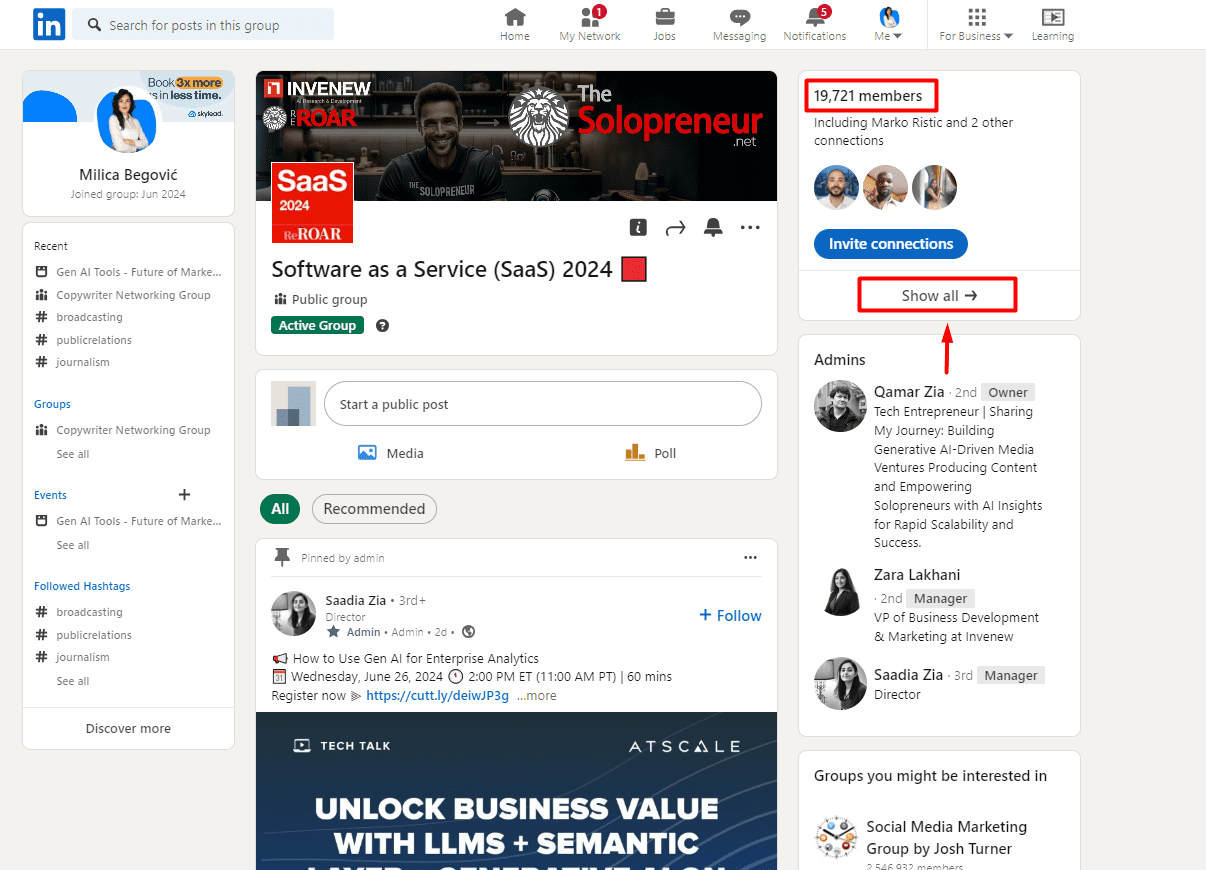
Then, extract the leads from the People section by copying the URL from your browser.
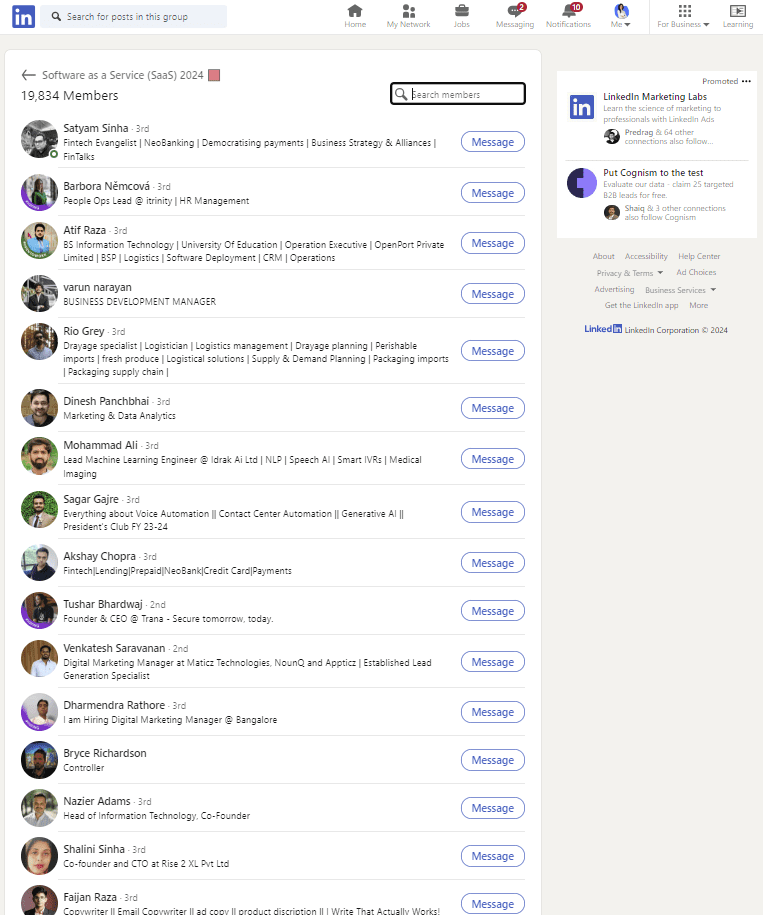
Now, this only works if you use Skylead to help reach out to these particular group members. Just paste the link and create a dedicated campaign for these group members only.
27. Find leads via LinkedIn posts
Lastly, you can also find leads via LinkedIn posts. For example, find a viral post on LinkedIn and go through the comment section and likes. Comb through them, find decision-makers, and put them in your personalization document. Here’s what that looks like 👇

Once you click, this is what you’ll see:

The next step is to use automation tools like Skylead to create an automated outreach campaign, and target leads from that specific post. Isn’t that amazing? Yes, we think so too. 😎 Here’s a connection request message example you can use in this case:
Hey,
I’ve noticed you liked this post on how volume creates abundance.
Just wanted to check what your thoughts are on the subject.
28. Find leads with LinkedIn polls
You can also use LinkedIn polls to attract and find leads. Just create a poll that has a relevant industry pain point, and once you get your replies, go through those people and reach out to them. It’s that simple. Here’s an example:
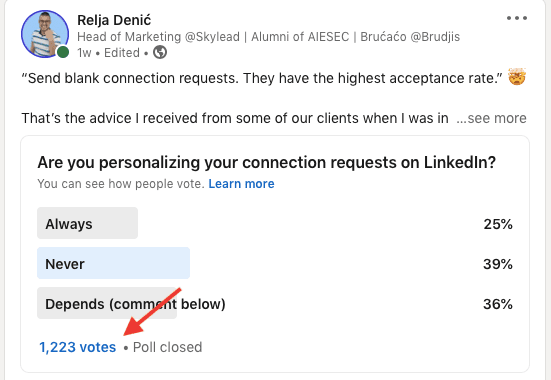
In this case, since users opted for one of three answers, we have three groups of leads: the ones who said "always," "never," and "it depends." You can adapt your outreach efforts to each answer group.
29. Find leads by discovering startups
If your ICP consists mostly of startups, you should visit websites such as ProductHunt, BetaList, AngelList, or Crunchbase. BetaList is the place for recently launched internet startups. It cleverly segments startups by industries, so you’ll find the one you need easily.
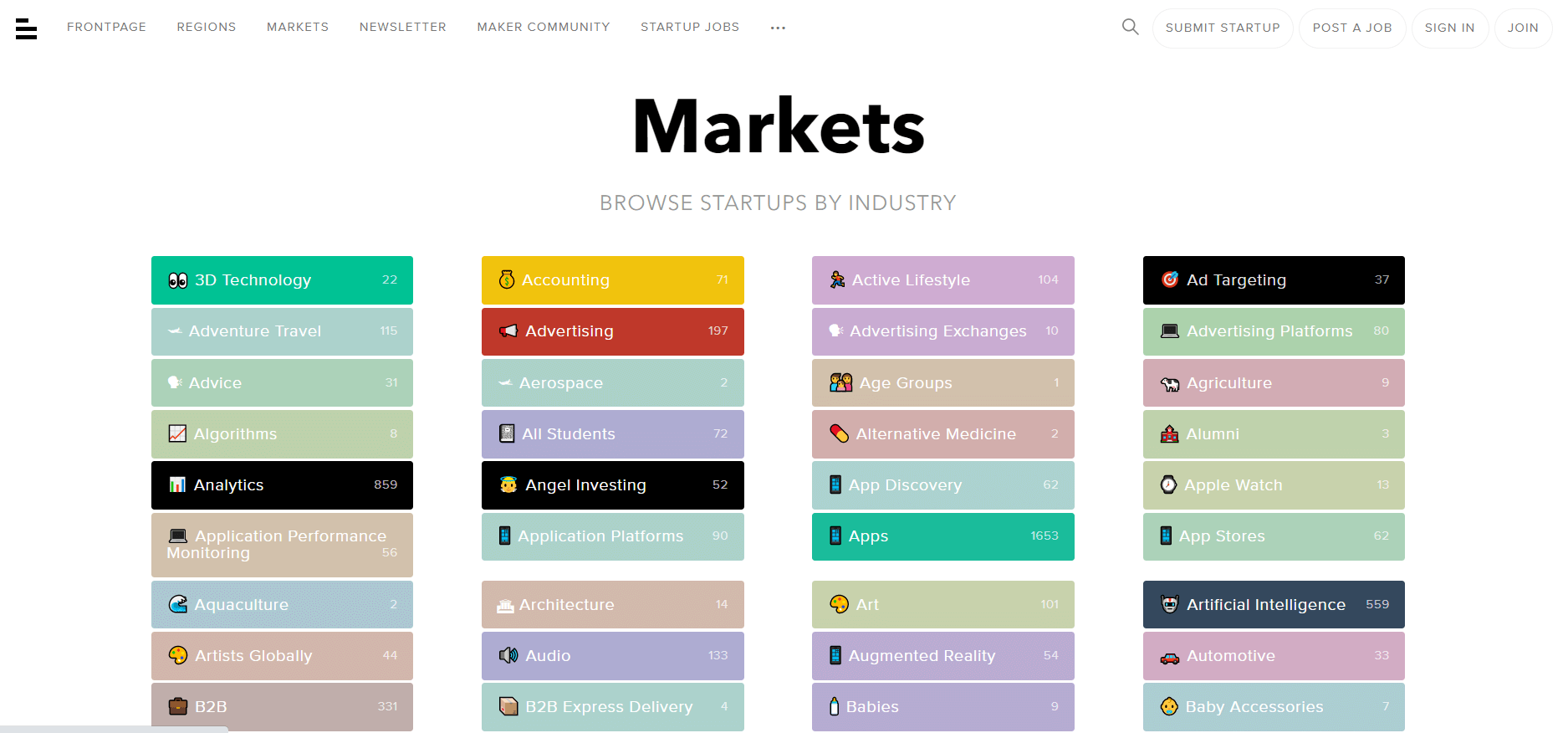
Another advantage is that you can contact the founder directly by finding their social media account on the profile listed beneath the company description or manually on LinkedIn.
30. Find leads by researching niche platforms
Not all companies are alike, and many niche businesses have buyer personas with unique jobs. So, it’s important to research and visit platforms where the target audience has a profile.
For example, if your target group is videographers or graphic designers, you would most likely visit Behance or Vimeo. On the other hand, if your sales leads are music artists, then SoundCloud is the place for you. Looking for developers? Give Github a try.
If, for example, you are selling an invoice management tool and need to reach out to freelancers, go to Upwork. The more information you have on your sales leads, the easier it will be to start the conversation. Here’s an example:
Hey,
I have seen the ratings on your Upwork profile, they are amazing.
I bet you get a lot of work as a freelancer. I was just wondering what tool you use for the invoice.
The possibilities are pretty much endless here.
Leads found, now what? Streamline your outreach to optimize time
Your leads are found, so now it’s time for outreach. Using an automation tool can help save time, track your outreach results better, and give you more time to focus on building relationships with prospects. So, what’s your choice of tool? Skylead, of course - a LinkedIn automation and email outreach platform that streamlines your outreach process.
Now, remember when we said there’s a good use for the personalization document with actionable data? Well, this is where we teach you how to use it.
To streamline the process and reach out to the sales leads you’ve found and researched, you should create a CSV file out of the gathered data. The only condition is also to paste the lead’s LinkedIn profile and/or email address.
Skylead already offers the following native variables for message personalization based on the sales leads’ LinkedIn profiles:
- First name
- Last name
- Current company
- Years in current company
- Total career positions count
- Total years of experience
- College name
- Occupation
Nonetheless, you can insert personalized information into columns, such as a reference to a certain post, comment, or any other place you’ve found them, and create your own custom variable for more personalization. For example, let’s take a customized intro that references how you’ve found them as a custom variable. Now, here’s what your CSV file should look like.
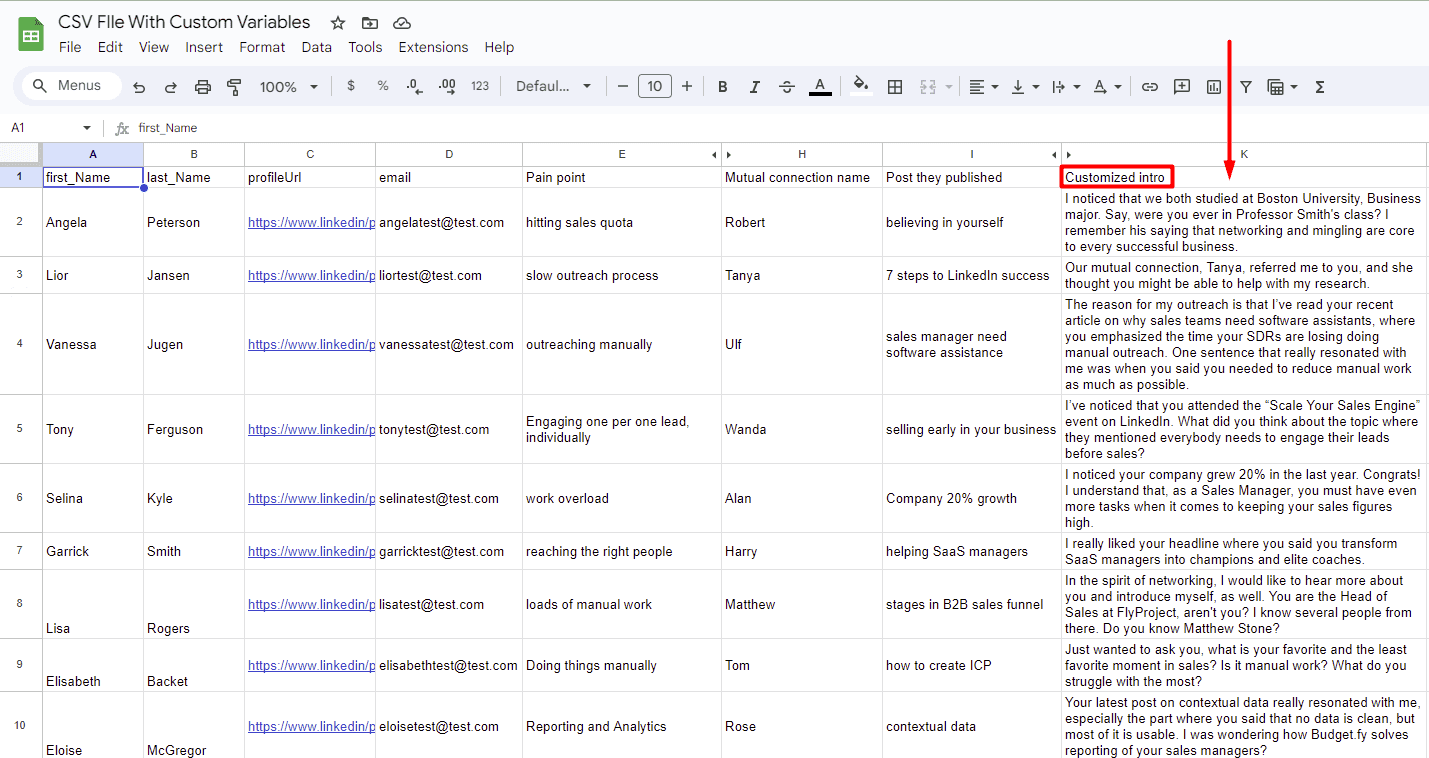
From here, you proceed with automating the outreach process. Here’s how 👇
Create a campaign in Skylead
It’s time to launch our first Skylead campaign, and we’ll go over it step-by-step.
First, go to your Skylead dashboard and click the Create new campaign button.
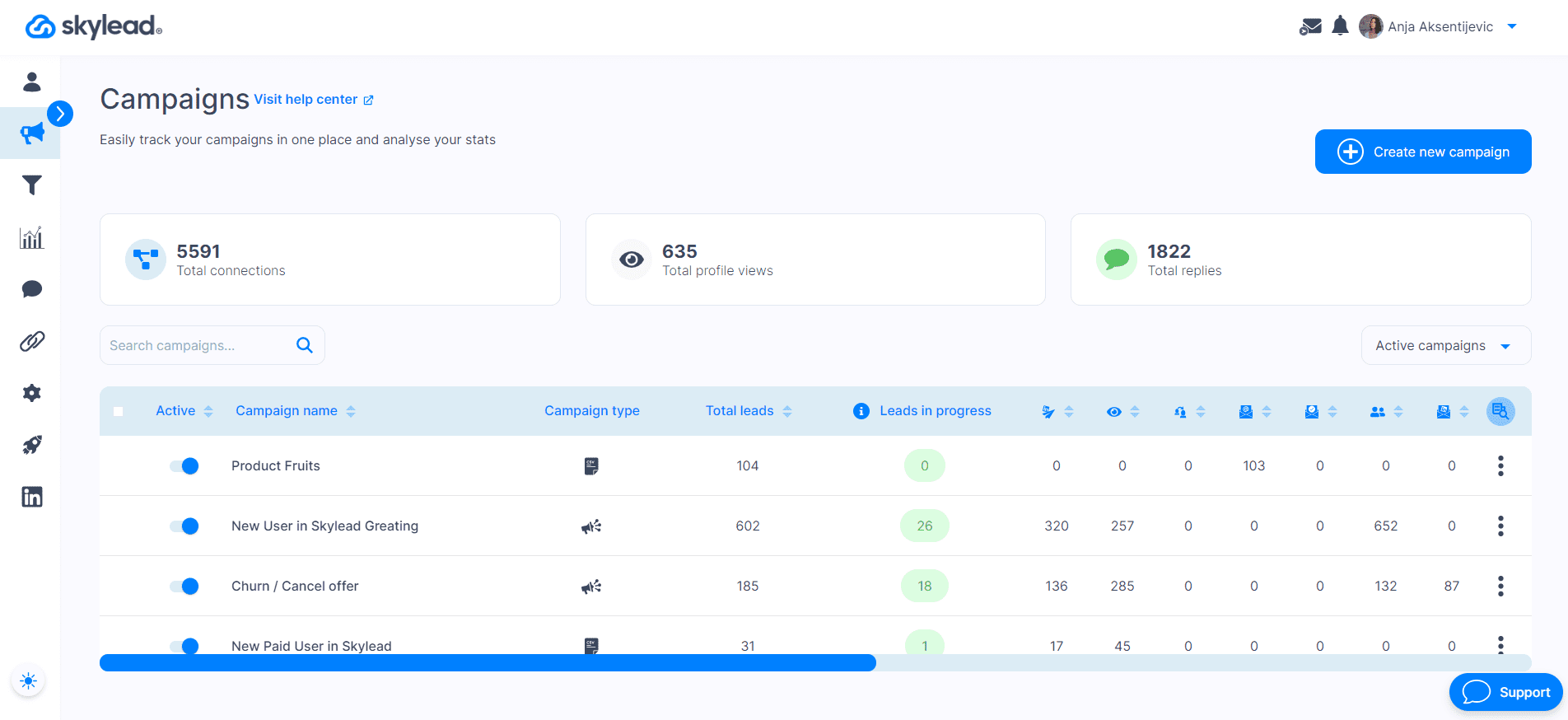
The second step is to choose your campaign type - Import.
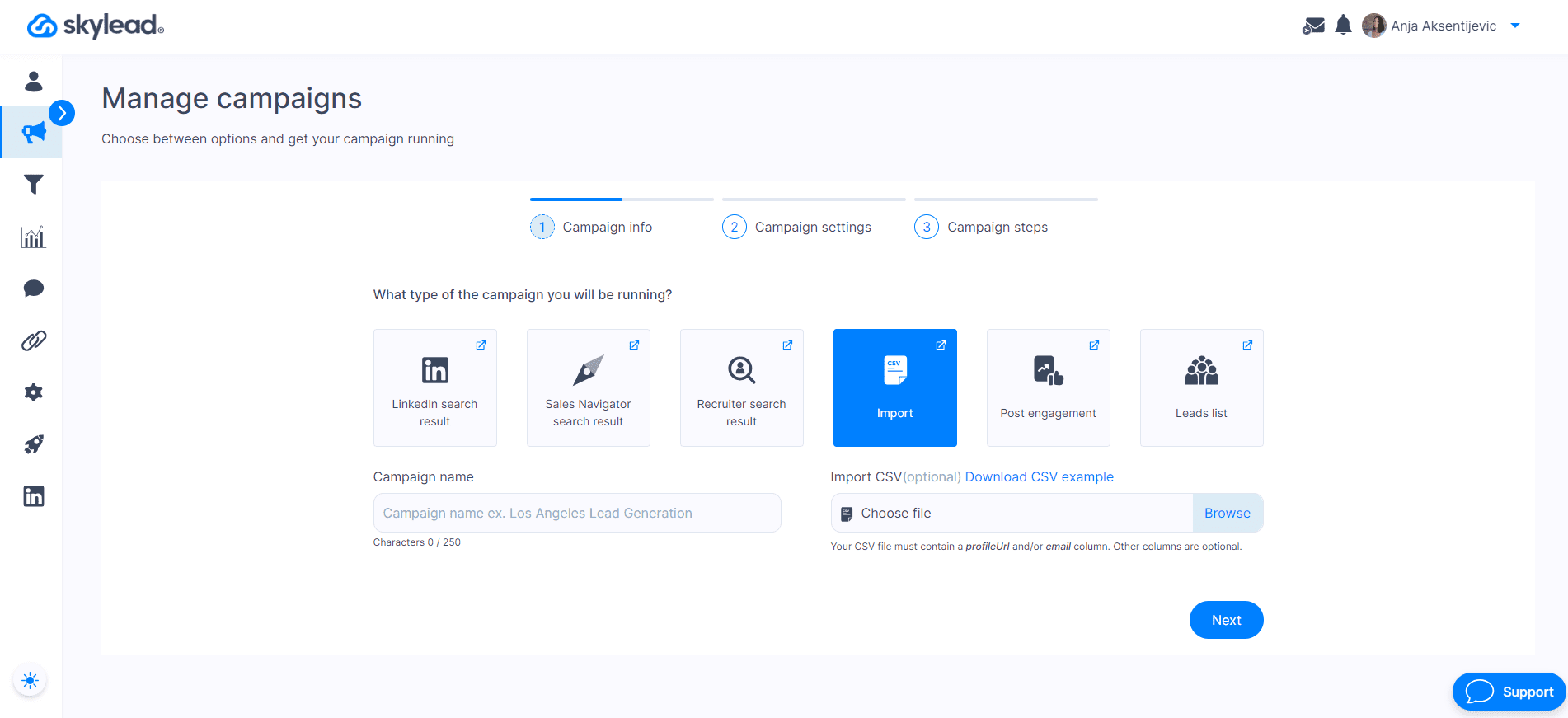
The next step is to set up additional settings, like date, email tracking metrics, etc. In this section, you can add an unlimited number of email addresses at no extra cost. Skylead will auto-rotate them for extra safety. Once you’ve made your changes, you can proceed.

Now, all you need to do is create an action path for your outreach that Skylead will follow automatically. This is where we introduce our first-to-market Smart sequences. With them, you can combine LinkedIn and email action with if/else conditions. This will help you reach your leads while maximizing touchpoints with them.
This is what a Smart sequence looks like in the tool:
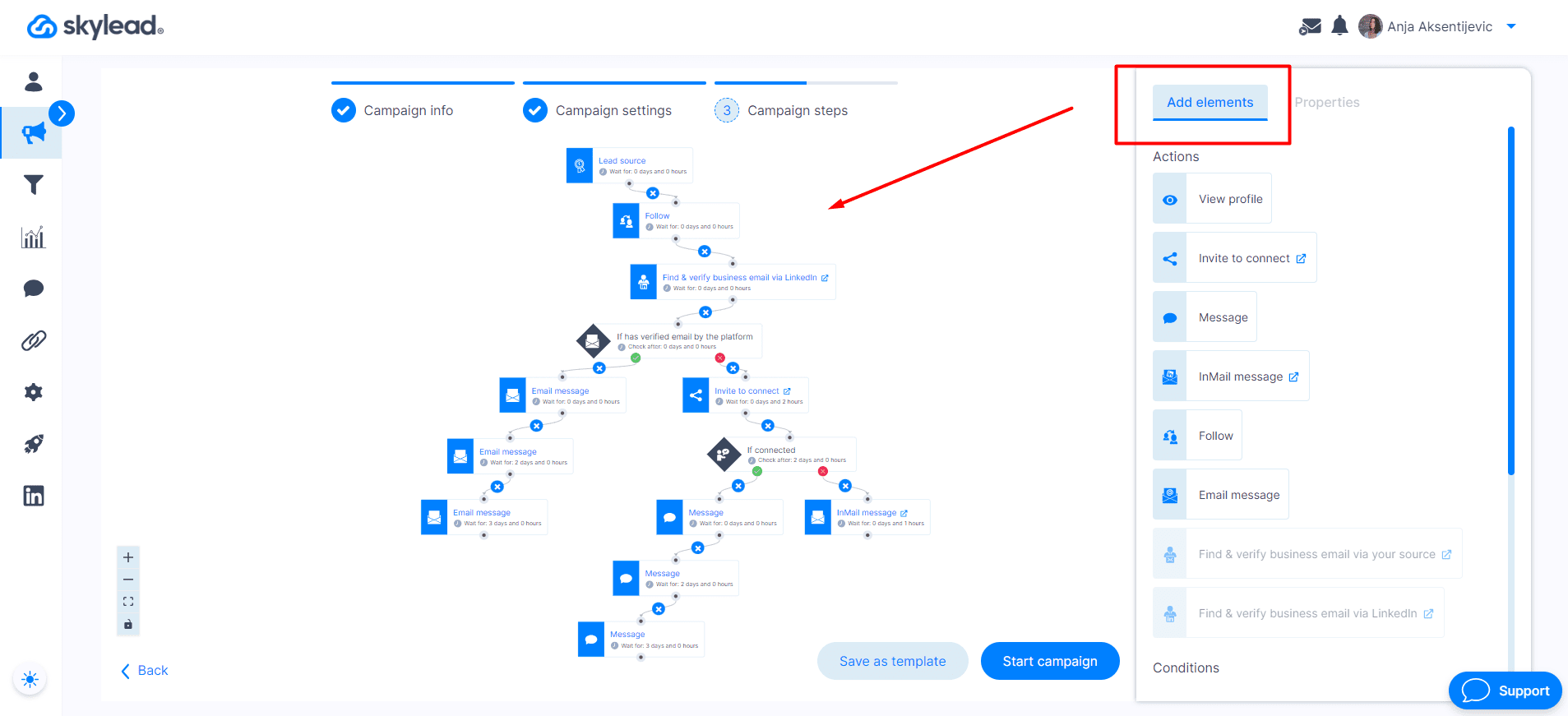
Lastly, don’t forget to create personalized messages for the actions, such as an invite to connect, LinkedIn InMail, LinkedIn message, or email message. From our experience, adding personalized image to your outreach flow increases the response rate to 63%.
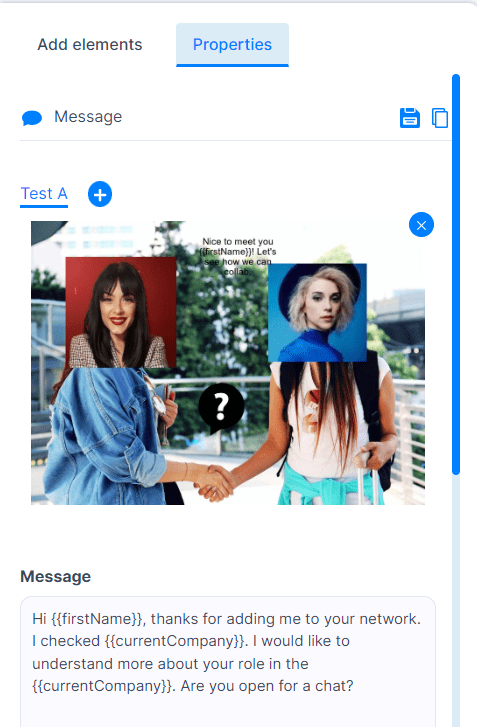
FAQs
How to find leads?
Identify potential customers through content marketing, social media engagement, and networking. Create valuable content, participate in discussions, and connect with prospects at industry events to generate interest and build relationships.
How to find B2B leads?
Use LinkedIn, industry associations, trade publications, and networking events. Leverage content marketing, email campaigns, and partnerships to attract and engage business clients.
How do I measure the effectiveness of each lead generation strategy?
To measure the effectiveness of each lead generation strategy, you need to track and analyze key metrics. Start by setting clear objectives for each strategy, such as the number of leads generated, conversion rates, and the quality of leads.
Tools like Google Analytics, CRM software, and marketing automation platforms are used to monitor these metrics. Look at the engagement levels, such as open rates and click-through rates for email campaigns or the level of interaction on social media posts. By comparing these metrics against your goals, you can determine which strategies are most effective and adjust your approach accordingly.
Can you provide examples of successful lead generation campaigns using these strategies?
Yes! A SaaS company used content marketing by creating a series of whitepapers and e-books targeting specific pain points in their industry. They promoted these resources through blog posts and social media, capturing leads through gated content forms. Another example is a B2B firm that utilized webinars and online events. They hosted industry-specific webinars, offering valuable insights and networking opportunities, which helped them gather high-quality leads.
A third example is a small business that leveraged email marketing and CRM automation. They segmented their email list based on customer behavior and engagement, sending personalized follow-ups and nurturing leads effectively, resulting in a significant increase in conversions. These examples highlight the importance of targeted content, engaging events, and personalized outreach in successful lead generation campaigns.
Ready to get those leads?
Now that you’ve seen 30 ways to find leads, it’s time for you to put your newly found knowledge to the test. Pick a couple of sources that hit close to home, and begin expanding your lead generation strategy.
While you’re at it, remember to incorporate an automation tool into your sales strategy. After you’ve found your leads, you can check out Skylead, schedule a demo, and get a 7-day free trial to explore all the outreach possibilities we offer. Saving time on manual outreach doesn’t seem so bad, does it? Outreach away!
